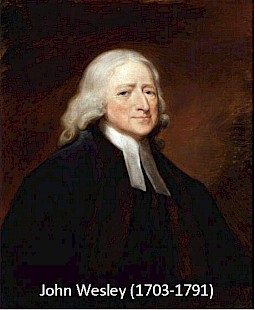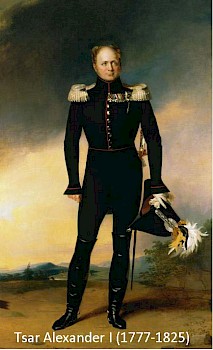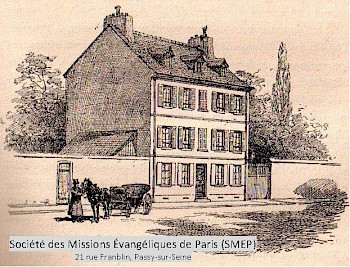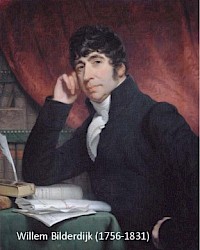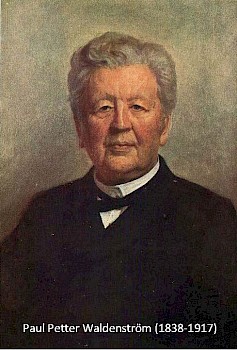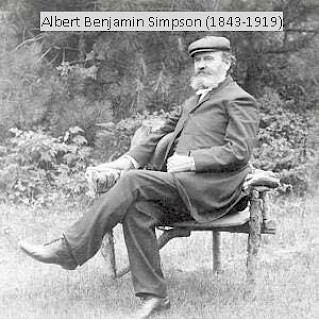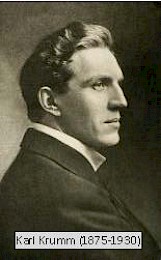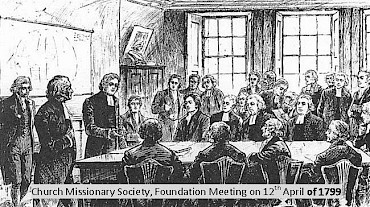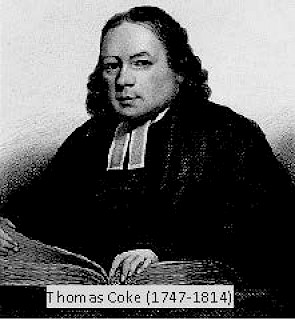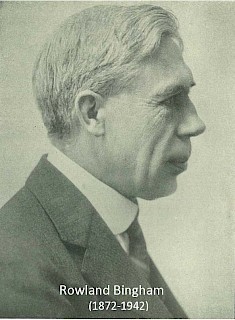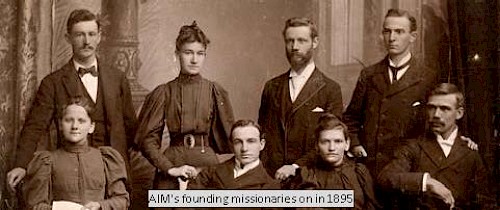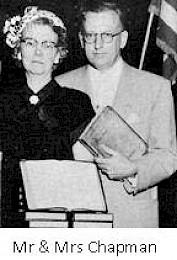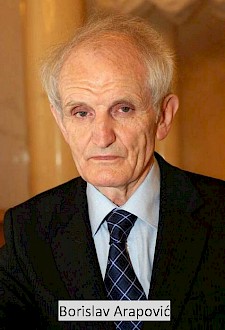Summary
This article was originally published by the Journal of Religious History, issue 42(2), pp. 145-180, in 2018.
The number of languages into which the Bible has been translated has grown exponentially during the past 2300 years. The history of Bible translation can be divided into three periods of growth, each with its distinct limiting and driving forces. In the low-growth period between 260 BC and 1814 growth was constrained by the rise of Islam and later by the information monopoly of the Catholic Church. The year 1815 was the inflection point, at which annual growth rates rose from below one to above one percent. The century 1815–1914 was a period of substantial growth due to the co-occurrence of three driving forces: Christian revivalism, internationalization, and industrialization. This was followed by a third period—the era of explosive growth between 1915 and today—in which information technology and the organizational structure of translation agencies have spurred growth. An array of multinational organizations of Anglo-Saxon origin have created a quasi-monopoly for worldwide Bible translation. The exponential growth of worldwide Bible translation can be modeled by a mathematical function. Using this function and assuming the continuation of current trends, it is possible to project the end of the history of pioneer Bible translation sometime between 2026 and 2031.
The Phenomenon
 In a complex system, an entity is regarded as growing exponentially if its quantity increases by a factor of more than one over a given time interval. For example, annual compounded interest of more than 1% on capital invested in a bank account will cause the amount to grow exponentially. Self-reproducing organisms, from bacteria to humans, have the potential for exponential growth. In the same way, industrial capital such as machinery may follow an exponential path by virtue of the fact that machines are used to produce new machines. System theorists like MeadowsSee Meadows D.,J. Randers and D. Meadows, 2004, Limits to Growth: The 30-Year Update. White River Junction, Vermont: Chelsea Green Publishing Company. and her colleagues call the growth of self-replicating entities “inherent exponential growth.” The growth of non-self-replicating entities may also be exponential, if these depend on a self-replicating entity. This second type of growth is called “derived exponential growth.” Food production and resource use, for instance, are driven by human population growth and may rise (and indeed have risen) exponentially.
In a complex system, an entity is regarded as growing exponentially if its quantity increases by a factor of more than one over a given time interval. For example, annual compounded interest of more than 1% on capital invested in a bank account will cause the amount to grow exponentially. Self-reproducing organisms, from bacteria to humans, have the potential for exponential growth. In the same way, industrial capital such as machinery may follow an exponential path by virtue of the fact that machines are used to produce new machines. System theorists like MeadowsSee Meadows D.,J. Randers and D. Meadows, 2004, Limits to Growth: The 30-Year Update. White River Junction, Vermont: Chelsea Green Publishing Company. and her colleagues call the growth of self-replicating entities “inherent exponential growth.” The growth of non-self-replicating entities may also be exponential, if these depend on a self-replicating entity. This second type of growth is called “derived exponential growth.” Food production and resource use, for instance, are driven by human population growth and may rise (and indeed have risen) exponentially.
The question of whether the number of human languages, currently at around 7,000, has increased exponentially over thousands of years has no definite answer. The historical linguist Trask seems to argue against exponential growth.  He dates any increase in the number of languages back to human prehistory. After the initial peopling of our planet, the total number of languages would have remained constant, at roughly “between 5000 and 10000See Trask, R. L. (1996). Historical Linguistics. London: Edward Arnolds Publishers, p. 325.”. A mathematical model of the growth pattern in human languages would require the dating and counting of hundreds of proto-languages, which is an endeavor on which linguists gave up some time agoIn 1895, the Bulletin de la Société Linguistique de Paris announced that it would reject any paper that attempted to reconstruct the ancestor language of all human languages.. Theoretically speaking, it is possible for the number of human languages to grow exponentially, as such growth depends on populations and their actions. As human populations expand and migrate to new areas, spatial separation causes the speech patterns of two or more communities to change in different ways. The accumulated changes result in different dialects, and ultimately in mutually unintelligible languages. Additionally, new languages may be formed by the process of creolization in which two languages merge into a hybrid language. Thus, the potential for exponential growth does exist, but the actual growth pattern of human languages is notoriously difficult to establish.
He dates any increase in the number of languages back to human prehistory. After the initial peopling of our planet, the total number of languages would have remained constant, at roughly “between 5000 and 10000See Trask, R. L. (1996). Historical Linguistics. London: Edward Arnolds Publishers, p. 325.”. A mathematical model of the growth pattern in human languages would require the dating and counting of hundreds of proto-languages, which is an endeavor on which linguists gave up some time agoIn 1895, the Bulletin de la Société Linguistique de Paris announced that it would reject any paper that attempted to reconstruct the ancestor language of all human languages.. Theoretically speaking, it is possible for the number of human languages to grow exponentially, as such growth depends on populations and their actions. As human populations expand and migrate to new areas, spatial separation causes the speech patterns of two or more communities to change in different ways. The accumulated changes result in different dialects, and ultimately in mutually unintelligible languages. Additionally, new languages may be formed by the process of creolization in which two languages merge into a hybrid language. Thus, the potential for exponential growth does exist, but the actual growth pattern of human languages is notoriously difficult to establish.
The number of languages for which a translation of the Bible, in whole or in part, is available, on the other hand, has risen exponentially, as we demonstrate in this section. The canon of the Bible was formed after the number of languages on Earth had stabilized. 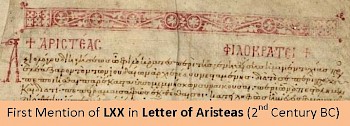 The first attested translation of ScripturesWe employ the term Scriptures in this paper as a shorthand for ”translated Bible portions”.was the Septuagint. The ancient historian Josephus links the Thora portion of the Septuagint to the year 260 BC. According to our own count, the total number of languages into which Scriptures have been translated reached the 2850 mark in 2013. This enumeration is based on a particular definition of what constitutes a human language, namely that reflected by the International Organization for Standardization (ISO) in Geneva, Switzerland. The ISO 639-3 standardThe registration authority of ISO 639-3 is the Summer Institute of Linguistics (SIL), a missionary organization. The ISO 639-3 standard grew out of the list of codes established in the Ethnologue (Lewis et al., 2016), the flagship publication of SIL. Ethnologue appeared first in 1951 and its 22nd edition was published in 2019. is a registry of 7,881 language codes and language names published in 2007. The registry represents each language by a unique three-letter code (e.g. “eng” for English; “yor” for Yoruba).
The first attested translation of ScripturesWe employ the term Scriptures in this paper as a shorthand for ”translated Bible portions”.was the Septuagint. The ancient historian Josephus links the Thora portion of the Septuagint to the year 260 BC. According to our own count, the total number of languages into which Scriptures have been translated reached the 2850 mark in 2013. This enumeration is based on a particular definition of what constitutes a human language, namely that reflected by the International Organization for Standardization (ISO) in Geneva, Switzerland. The ISO 639-3 standardThe registration authority of ISO 639-3 is the Summer Institute of Linguistics (SIL), a missionary organization. The ISO 639-3 standard grew out of the list of codes established in the Ethnologue (Lewis et al., 2016), the flagship publication of SIL. Ethnologue appeared first in 1951 and its 22nd edition was published in 2019. is a registry of 7,881 language codes and language names published in 2007. The registry represents each language by a unique three-letter code (e.g. “eng” for English; “yor” for Yoruba).
|
Category |
Languages (ISO 639-3) |
|---|---|
|
Extinct |
814 |
|
Existing |
7,046 |
|
Constructed |
21 |
|
Total |
7,881 |
|
Translations (2013) |
2,850 |
|
|
|
Table 1: Languages per category
|
Continent |
Languages (ISO 639-3) |
|---|---|
|
Africa |
2,250 |
|
Americas |
1,198 |
|
Asia |
2,514 |
|
Europe |
378 |
|
Oceania |
1,534 |
|
Total |
7,881 |
Table 2: Languages per continent
Some linguists have criticized the ISO 639-3 standard, even going so far as to question its usefulness. We argue that the case for a language identification system can be made and that its benefits greatly outweigh any deficiencies. A summary of this debate is provided in the Appendix.
We compiled the dates of Scripture translations from various sources, for example from web-searches and from publications of the United Bible Societies (UBS): The Book of a Thousand Tongues (1st edition by North, 1938; 2nd edition by Nida, 1972), Scriptures of the World (the editions of 1968 and 1996), and the Scriptures Language Reports (1991–today). We also used information included in the Ethnologue of the Summer Institute of Linguistics (SIL) and obtained in personal communication. Although these datasets overlap, each has translation dates contradicting the others or not reported by the others. To the best of my knowledge, these datasets have never been integrated before. The growth curves for different Scripture categories are displayed in Chart 1.
The yellow curve, representing the cumulative number of translations, has the hockey stick shape characteristic of exponential curves. The process of Scripture translation has inherent exponential growth, not derived from anything that grows exponentially. It is self-replicating by virtue of the fact that translations are used to produce other translationsFor example, the Syriac Peshitta was used in the translation of the Armenian Bible; the Peshitta and Armenian Bible were then used in the translation of the Georgian Bible.. The red dashed line is a mathematical model of the growth curve for which we calculate the formula in section 4. An important paradigm shift occurred between 1789 and 1830 that pushed the annual growth rate from below one percent to above one percent, with the year 1815 marking the inflection point of the exponential curve. In section 3, we identify three enabling factors for this paradigm shift that are still at work today. Chart 2 magnifies the data for the last 200 years, showing an explosive and ever-accelerating rate of growth.
System theoristsSee Meadows D.,J. Randers and D. Meadows, 2004, Limits to Growth: The 30-Year Update. White River Junction, Vermont: Chelsea Green Publishing Company, p. 31. have described exponential processes in terms of positive and negative feedback loops. A feedback loop is a chain of cause-and-effect relationships resulting in changes of the original base. A positive feedback loop produces runaway growth, while a negative feedback loop keeps growth in check, holding the total quantity within a certain range. The translation of Scripture into new languages, including its enabling factors, forms the positive feedback loop of the current stock of Bibles. Bible versions that are not updated and drop out of use form the negative feedback loop. In the 19th century, for example, Bibles were translated into several Chinese dialects that European standards regard as unintelligible languages. With the rise of Mandarin Chinese in the 20th century, the Mandarin Bible supplanted most dialect versions.
Enabling Factors
The history of worldwide Bible translation can be divided into three eras: a period of low growth (260 BC–1814 AD); a period of sustained high growth (1815–1914); and a period of explosive growth (1915–today). The years between 1789 and 1830 constitute a time window for a paradigm shift that enabled the rapid growth of the latter two eras.
Low growth (260 BC–1814 AD): Ancient geopolitics constrained the growth of the number of  languages with Scriptures over the 2074 years following the Septuagint. Before the seventh century AD, transcontinental trade routes were under Roman control or were decentralized. After the seventh century, Islamic polities checked all major trade routes and confined Christianity to Western Europe as the only region in which it developed majority status. Before the rise of Islam, Bible portions were translated into 11 ancient languages, all scattered along major trade routes. On the most important trade track, the Silk Road, translators produced Scriptures in the following languages (from west to east): AramicWhen the Jews returned from the Babylonian exile around the year 532 BC, they spoke Aramaic, the official language of the Babylonian Empire, not their ancestral Hebrew language. They needed an interpretation when they listened to the Hebrew Bible (see Nehemia 8:7–8). This translation into Aramaic, called Targum, was initially oral and was written down later, probably starting around the year 120 BC. After the dissolution of the Babylonian empire, the Aramaic language broke into Western and Eastern dialects that quickly developed into two unintelligible languages and then into two groups of dialects. Jewish Palestinian Aramaic in which the Targum was written is an Eastern Aramaic language. (120 BC?), Old SyriacOld Syriac or Classical Syriac was the Eastern Aramaic language spoken in Edessa, modern-day Şanlıurfa in Turkey, from 100 BC to 1400 AD. Portions of the Old and New Testament were completed by unknown translators as early as 110 AD. The New Testament is mentioned for the first time in 160 AD. The Syriac Bible, called Peshitta, became the standard version of the Syrian Orthodox Church in the fifth century. The Peshitta formed the basis for all translations into languages spoken along the Silk Road. (110 AD?), ArmenianThe conversion of the Armenians to Christianity in 301 AD is attributed to Gregory the Illuminator, who was consecrated as the first Catholicos of the Armenian Church. In 406, the Armenian linguist Mesrob Mashtots created the Armenian script, and in 411 he and Catholicos Sahak translated the Classical Armenian Bible, basing their translation on the Peshitta. After accessing the Septuagint and the Greek New Testament, they revised the whole Bible in 434. (411), GeorgianAccording to Christian tradition, the Georgians accepted the Christian faith in the early fourth century because of St. Nino, a slave woman. The Bible was translated into Old or Classical Georgian using a special alphabet that was reformed later in the 11th century. The earliest Bible manuscripts date from the fifth century and show that both the Syriac Peshitta Bible and the Armenian Bible were used as the basis for translation (see Songulashvili, 1990). (480?), Middle PersianMiddle Persian or Pahlavi (Indo-European language family) was spoken in the Sasanian kingdom from 300 BC to 800 AD. After the ninth century, Pahlavi survived as the liturgical language used by Zoroastrian priests. The only extant Bible fragments in Pahlavi are Psalms 94–99, 118, and 121–36, which were discovered in the ruins of the Nestorian monastery in Bulayïq near Turfan (China). The Babylonian Talmud (Megillah Tractate 18a) alludes to the Elamite and Median languages in which it was permitted to recite the Book of Esther on the Day of Purim. One of these languages probably refers to the Pahlavi language, suggesting that the Book of Esther too was translated into Middle Persian (Andreas, 1910; Sundermann, 1989, p. 138). (550?), SogdianThe Sogdian language was the lingua franca used on the Silk Road during the Táng dynasty 唐朝 (618–907). It is an Indo-European language spoken around Samarkand, Uzbekistan, from 100 BC to 1000 AD. The modern Yaghnobi language, native to 12,000 people in Tajikistan, descends directly from Sogdian. The Sogdian people in Samarkand were supplanted by Uzbek and Tajik tribes in the 16th century. Fragments of the Sogdian Psalter and of the Gospels of Matthew, Luke, and John were discovered in the ruins of the Nestorian monastery in Bulayïq near Turfan (see Peters, 1936, and Schwartz, 1974). (380?), and Middle ChineseMiddle Chinese was the vehicular language of the Táng dynasty and spoken during the period 0–900 AD. In 1625, a stela was excavated in the city of Xī'ān, the former capital of the Táng dynasty, and is now held at the Xī'ān Bēilín Museum 西安碑林. The Chinese text on the stela mentions the arrival of Nestorian missionaries in 635 and the translation of Bible portions, none of which survive. Horne (1917) translated the text of the stela into English (available online). (650?). On the eastern track of the Trans-Saharan Trade RoutesEric Ross (2011) presents the historical trans-Saharan trade relations as a network of trade routes spanning the whole Saharan desert., Bible portions were translated in two languages: CopticChristians were present in Egypt possibly since the time of the New Testament. Apollos, a coworker of the apostle Paul, was a Jewish Christian from Alexandria (see Acts 18:24–25). Wisse (1995) dates the first Scripture translated into the Sahidic dialect of Coptic back to the year 400. When Alexandria was conquered by Islamic forces in 642, Christians gradually moved to Upper Egypt. A new Coptic version of the Bible in the Bohairic dialect was needed and completed by the year 800. (400) in the north and Ge'ezGe'ez (or Ethiopian), a Semitic language of the Afro-Asiatic family, was the official language of the Aksum kingdom in Ethiopia during the period 100–940 AD. According to tradition, the Syrian-Greek missionary Frumentius converted Ezana, king of Ethiopia, to Christianity in 383. The exact date and sources of the Ge'ez Bible are uncertain. A number of Syrian missionaries moved to Ethiopia in the fifth century, suggesting that the Peshitta might have been the source, but specialists relate most of the Ge'ez Bible to the Septuagint and to the Greek New Testament. Since the 10th century, Ge'ez has been used as a liturgical language of the Ethiopian Orthodox Church. See Mikre-Sellasie (2000) and Zuurmond (1995) for details. (480?) in the south. Rome, the home of the Latin VulgateHieronymus was the only translator of the Latin Vulgate Bible completed in 405. He spent considerable time in Bethlehem to access the original Hebrew text. (405), was reached from the Middle East via the Mediterranean Trade Routes, and GothicGothic was an Eastern Germanic language that became extinct before the ninth century. The Goths populated the areas of Bulgaria and Ukraine where they were reached by missionaries in the mid-third century. The conversion of the Goths is generally attributed to Wulfila (311–382), who was consecrated as Bishop of the Goths in 342. Wulfila created the Gothic alphabet and translated the Bible. A few manuscripts survive, of which the Codex Argenteus now conserved at the University of Uppsala is the most famous. The University of Antwerp hosts the Wulfila online project with various Gothic language resources (see Rhodes, 2007, pp. 101–102). (350?) was attained from Cappadocia.
languages with Scriptures over the 2074 years following the Septuagint. Before the seventh century AD, transcontinental trade routes were under Roman control or were decentralized. After the seventh century, Islamic polities checked all major trade routes and confined Christianity to Western Europe as the only region in which it developed majority status. Before the rise of Islam, Bible portions were translated into 11 ancient languages, all scattered along major trade routes. On the most important trade track, the Silk Road, translators produced Scriptures in the following languages (from west to east): AramicWhen the Jews returned from the Babylonian exile around the year 532 BC, they spoke Aramaic, the official language of the Babylonian Empire, not their ancestral Hebrew language. They needed an interpretation when they listened to the Hebrew Bible (see Nehemia 8:7–8). This translation into Aramaic, called Targum, was initially oral and was written down later, probably starting around the year 120 BC. After the dissolution of the Babylonian empire, the Aramaic language broke into Western and Eastern dialects that quickly developed into two unintelligible languages and then into two groups of dialects. Jewish Palestinian Aramaic in which the Targum was written is an Eastern Aramaic language. (120 BC?), Old SyriacOld Syriac or Classical Syriac was the Eastern Aramaic language spoken in Edessa, modern-day Şanlıurfa in Turkey, from 100 BC to 1400 AD. Portions of the Old and New Testament were completed by unknown translators as early as 110 AD. The New Testament is mentioned for the first time in 160 AD. The Syriac Bible, called Peshitta, became the standard version of the Syrian Orthodox Church in the fifth century. The Peshitta formed the basis for all translations into languages spoken along the Silk Road. (110 AD?), ArmenianThe conversion of the Armenians to Christianity in 301 AD is attributed to Gregory the Illuminator, who was consecrated as the first Catholicos of the Armenian Church. In 406, the Armenian linguist Mesrob Mashtots created the Armenian script, and in 411 he and Catholicos Sahak translated the Classical Armenian Bible, basing their translation on the Peshitta. After accessing the Septuagint and the Greek New Testament, they revised the whole Bible in 434. (411), GeorgianAccording to Christian tradition, the Georgians accepted the Christian faith in the early fourth century because of St. Nino, a slave woman. The Bible was translated into Old or Classical Georgian using a special alphabet that was reformed later in the 11th century. The earliest Bible manuscripts date from the fifth century and show that both the Syriac Peshitta Bible and the Armenian Bible were used as the basis for translation (see Songulashvili, 1990). (480?), Middle PersianMiddle Persian or Pahlavi (Indo-European language family) was spoken in the Sasanian kingdom from 300 BC to 800 AD. After the ninth century, Pahlavi survived as the liturgical language used by Zoroastrian priests. The only extant Bible fragments in Pahlavi are Psalms 94–99, 118, and 121–36, which were discovered in the ruins of the Nestorian monastery in Bulayïq near Turfan (China). The Babylonian Talmud (Megillah Tractate 18a) alludes to the Elamite and Median languages in which it was permitted to recite the Book of Esther on the Day of Purim. One of these languages probably refers to the Pahlavi language, suggesting that the Book of Esther too was translated into Middle Persian (Andreas, 1910; Sundermann, 1989, p. 138). (550?), SogdianThe Sogdian language was the lingua franca used on the Silk Road during the Táng dynasty 唐朝 (618–907). It is an Indo-European language spoken around Samarkand, Uzbekistan, from 100 BC to 1000 AD. The modern Yaghnobi language, native to 12,000 people in Tajikistan, descends directly from Sogdian. The Sogdian people in Samarkand were supplanted by Uzbek and Tajik tribes in the 16th century. Fragments of the Sogdian Psalter and of the Gospels of Matthew, Luke, and John were discovered in the ruins of the Nestorian monastery in Bulayïq near Turfan (see Peters, 1936, and Schwartz, 1974). (380?), and Middle ChineseMiddle Chinese was the vehicular language of the Táng dynasty and spoken during the period 0–900 AD. In 1625, a stela was excavated in the city of Xī'ān, the former capital of the Táng dynasty, and is now held at the Xī'ān Bēilín Museum 西安碑林. The Chinese text on the stela mentions the arrival of Nestorian missionaries in 635 and the translation of Bible portions, none of which survive. Horne (1917) translated the text of the stela into English (available online). (650?). On the eastern track of the Trans-Saharan Trade RoutesEric Ross (2011) presents the historical trans-Saharan trade relations as a network of trade routes spanning the whole Saharan desert., Bible portions were translated in two languages: CopticChristians were present in Egypt possibly since the time of the New Testament. Apollos, a coworker of the apostle Paul, was a Jewish Christian from Alexandria (see Acts 18:24–25). Wisse (1995) dates the first Scripture translated into the Sahidic dialect of Coptic back to the year 400. When Alexandria was conquered by Islamic forces in 642, Christians gradually moved to Upper Egypt. A new Coptic version of the Bible in the Bohairic dialect was needed and completed by the year 800. (400) in the north and Ge'ezGe'ez (or Ethiopian), a Semitic language of the Afro-Asiatic family, was the official language of the Aksum kingdom in Ethiopia during the period 100–940 AD. According to tradition, the Syrian-Greek missionary Frumentius converted Ezana, king of Ethiopia, to Christianity in 383. The exact date and sources of the Ge'ez Bible are uncertain. A number of Syrian missionaries moved to Ethiopia in the fifth century, suggesting that the Peshitta might have been the source, but specialists relate most of the Ge'ez Bible to the Septuagint and to the Greek New Testament. Since the 10th century, Ge'ez has been used as a liturgical language of the Ethiopian Orthodox Church. See Mikre-Sellasie (2000) and Zuurmond (1995) for details. (480?) in the south. Rome, the home of the Latin VulgateHieronymus was the only translator of the Latin Vulgate Bible completed in 405. He spent considerable time in Bethlehem to access the original Hebrew text. (405), was reached from the Middle East via the Mediterranean Trade Routes, and GothicGothic was an Eastern Germanic language that became extinct before the ninth century. The Goths populated the areas of Bulgaria and Ukraine where they were reached by missionaries in the mid-third century. The conversion of the Goths is generally attributed to Wulfila (311–382), who was consecrated as Bishop of the Goths in 342. Wulfila created the Gothic alphabet and translated the Bible. A few manuscripts survive, of which the Codex Argenteus now conserved at the University of Uppsala is the most famous. The University of Antwerp hosts the Wulfila online project with various Gothic language resources (see Rhodes, 2007, pp. 101–102). (350?) was attained from Cappadocia.
After the Islamic conquests and during the Islamic Golden Age (650–1300), Eastern Christianity was marginalized in its own territory and the supply of missionaries and translators dried up. Travel along the trade routes was unsafe for Christians. Except for one Asian language, the only region in which Scriptures were translated between 650 and 1400 was Europe with 10 new languagesThe 10 European languages in chronological order are the following: Mondsee Gospel in Old High German (810); Vespasian Psalter in Old English (850); Methodius Bible in Church Slavonic (884); Stjórn Old Testament in Old Norse (1205?); Waldensian New Testament in Old Provençal (1190?); Alfonso Bible in Spanish (1280); Bible Historiale in Old French (1297); Augsburg New Testament in Middle High German (1350); Herne Bible in Middle Dutch (1360); Wycliffe Bible in Middle English (1384). Furthermore, in 1307 the Catholic papal envoy to the Mongol court, John of Montecorvino, translated the New Testament into the Old Uyghur, the lingua franca of the Mongol elite in China. No manuscript has been preserved, but John reported his achievement in letters to the Pope (see Yule, 1914, pp. 45–58).. For three hundred years (900–1200), translation projects were frozen without any known output of Scriptures. Three factors explain this inactivity.  First, Europe was linguistically fragmented with hundreds of vernacular languages that had proliferated after the fall of the Roman Empire. These vernacular languages showed extensive regional variation, making communication impossible between people living more than 300 kmSee Trask, R. L., 1996. Historical Linguistics. London: Edward Arnolds Publishers, pp. 165–169. apart. The sovereign of each polity represented one language variety but did not promote this variety with a consistent language policy.
First, Europe was linguistically fragmented with hundreds of vernacular languages that had proliferated after the fall of the Roman Empire. These vernacular languages showed extensive regional variation, making communication impossible between people living more than 300 kmSee Trask, R. L., 1996. Historical Linguistics. London: Edward Arnolds Publishers, pp. 165–169. apart. The sovereign of each polity represented one language variety but did not promote this variety with a consistent language policy.
Most languages did not exhibit a single obvious variety upon which a translation could be based. Second, the Popes developed a negative attitude toward translating the Vulgate into the vernacular languages of Europe that culminated in prohibitions, at the Councils of Toulouse (1229)This prohibition is included in Canon 14 of the Council of Toulouse of 1229 (see Peters, 1980, p. 195). and Tarragona (1234)This prohibition is included in Canon 2 of the Council of Tarragona of 1234 (see Simms, 1929, p. 162)., against reading and translating the Scriptures.  Third, the intellectual climate at the turn of the first Millennium was not conducive to major endeavors such as Bible translation. The information monopolyThe information network of the Catholic Church in the Middle Ages consisted of three levels (Dudley 1991, p. 146; Hanson, 2008, p. 14): At the top tier the Pope and his high-ranking cardinals decided on the type of information the European public was allowed to know. In the second tier were monasteries, seminaries, and later universities that received, archived, and transmitted this information in Medieval Latin to the literate elite. At the third level was this elite, consisting mainly of priests educated in Latin, who translated the information into the vernacular languages of Europe to make it available to the illiterate masses. of the Catholic Church, the corruption of the PopesBetween 924 and 1048, the Roman popes were installed and controlled by two factions of a Roman noble clan, the Tusculans and Crescentii, both consisting of descendants of Theophylact (864–924), a high curial officer. Theophylact‘s wife and daughter influenced the appointment of popes between 924 and 974. The Crescentii installed their popes between 974 and 1012 and the Tusculans theirs between 1012 and 1048, before the German king Henry III finished their scheme (Cushing, 2005, pp. 61–62). The 124 years between 924 and 1048 have been called the Dark Age by Catholic Church historians since the 16th century (Dwyer, 1998, p. 155)., and, as some have argued, apocalypticism of the year 1000The Book of Revelation 20:3–5 teaches that the last judgment will occur after a period of 1000 years in which the devil is held in captivity. In a certain version of the post-millenarist doctrine, the year 1000 was the earliest point in time that the last judgment could have occurred. Burr (1901) summarized the view of European historians that the year 1000 had not generated any apocalyptic fervor, while Landes (2000), one hundred years later, defended the existence of end-time expectations in the run-up to the year 1000. held intellectual activity in bondage.
Third, the intellectual climate at the turn of the first Millennium was not conducive to major endeavors such as Bible translation. The information monopolyThe information network of the Catholic Church in the Middle Ages consisted of three levels (Dudley 1991, p. 146; Hanson, 2008, p. 14): At the top tier the Pope and his high-ranking cardinals decided on the type of information the European public was allowed to know. In the second tier were monasteries, seminaries, and later universities that received, archived, and transmitted this information in Medieval Latin to the literate elite. At the third level was this elite, consisting mainly of priests educated in Latin, who translated the information into the vernacular languages of Europe to make it available to the illiterate masses. of the Catholic Church, the corruption of the PopesBetween 924 and 1048, the Roman popes were installed and controlled by two factions of a Roman noble clan, the Tusculans and Crescentii, both consisting of descendants of Theophylact (864–924), a high curial officer. Theophylact‘s wife and daughter influenced the appointment of popes between 924 and 974. The Crescentii installed their popes between 974 and 1012 and the Tusculans theirs between 1012 and 1048, before the German king Henry III finished their scheme (Cushing, 2005, pp. 61–62). The 124 years between 924 and 1048 have been called the Dark Age by Catholic Church historians since the 16th century (Dwyer, 1998, p. 155)., and, as some have argued, apocalypticism of the year 1000The Book of Revelation 20:3–5 teaches that the last judgment will occur after a period of 1000 years in which the devil is held in captivity. In a certain version of the post-millenarist doctrine, the year 1000 was the earliest point in time that the last judgment could have occurred. Burr (1901) summarized the view of European historians that the year 1000 had not generated any apocalyptic fervor, while Landes (2000), one hundred years later, defended the existence of end-time expectations in the run-up to the year 1000. held intellectual activity in bondage.
In the age of scholasticism, critical thinking was gradually (re)introduced, but this did not substantially increase the number of Scripture translations, at least not between 1200 and 1400. In six out of eight new languages, local authorities or kings sponsored the translation For example, the Stjórn translation of the Old Testament into Old Norse was supported at some point by the king of Norway (see Kirby 1986, 1993)., while in two languages (Old Occitan and Middle English) the establishment repressed the translatorsThe Waldensians, a Christian movement that was founded by Peter Waldo and violently suppressed by the Catholic Church, translated the New Testament into Old Occitan/Provençal around 1190 (see Tourn, 1980). John Wycliffe, the translator of the Bible into Middle English, was a dissident Catholic priest who is viewed today as a precursor of the English Reformation.. These translators represented the first challenge to the information monopoly of the Catholic Church.
Two pivotal events made an impact on the history of Bible translation: the invention of the printing press by Johann Gutenberg in 1455 and the discovery of the New World by Christopher Columbus in 1492. The emergence of the printing press undermined the information monopoly of the Catholic Church in two ways. Firstly, it enabled Martin Luther and other Reformers to disseminate their views by circumventing the censorship of the Catholic Church (Hanson, 2008, p. 15). Secondly, the printing press signaled a move away from Latin toward vernacular languages.  Although the first printed book was the Vulgate, a stream of printed Bibles in 25 European and five Asian languagesToscana Italian (1471); Catalan (1478); Middle Low German (1478); Middle French (1487); Czech (1488); Portuguese (1505); South Levantine Arabic (1517); Belarusian (1517); Modern Spanish (1517); Modern High German (1522); Polish (1522); Danish (1524); Modern Dutch (1526); Modern English (1526); Swedish (1526); Hungarian (1533); Icelandic (1540); Western Yiddish (1544); Western Farsi (1546); Modern Greek (1547); Ladino (1547); Finnish (1548); Romanian (1553); Slovenian (1555); Romansch (1560); Waldensian Vaudois (1560); Croatian (1562); Ottoman Turkish (1565); Welsh (1567); Basque (1571). followed suit in the 15th and 16th centuries. These vernacular Bible translations initiated different processes of language standardization driven by the printing press. Since Latin was only available to a minority of intellectuals, printers and booksellers actively created a market for books in vernacular languages by shaping standard language varietiesAt an early stage, printers undertook the task of standardization. For example, the English printer William Caxton (1422–1491) chose words in his publications that had widest circulation in different British dialects (Trask, 1996, p. 166); in Germany, a similar role was played by Lucas Cranach the Elder (1472–1553) who printed pamphlets for Martin Luther. that would be comprehensible to a wide readership. Benedict AndersonSee Anderson, Benedict (1991). Imagined Communities: Reflections on the Origins and Spread of Nationalism. New York: Verso. called the commercial interest of printers the “logic of print capitalism,” which dictated that more books be printed in the speech of ordinary people.
Although the first printed book was the Vulgate, a stream of printed Bibles in 25 European and five Asian languagesToscana Italian (1471); Catalan (1478); Middle Low German (1478); Middle French (1487); Czech (1488); Portuguese (1505); South Levantine Arabic (1517); Belarusian (1517); Modern Spanish (1517); Modern High German (1522); Polish (1522); Danish (1524); Modern Dutch (1526); Modern English (1526); Swedish (1526); Hungarian (1533); Icelandic (1540); Western Yiddish (1544); Western Farsi (1546); Modern Greek (1547); Ladino (1547); Finnish (1548); Romanian (1553); Slovenian (1555); Romansch (1560); Waldensian Vaudois (1560); Croatian (1562); Ottoman Turkish (1565); Welsh (1567); Basque (1571). followed suit in the 15th and 16th centuries. These vernacular Bible translations initiated different processes of language standardization driven by the printing press. Since Latin was only available to a minority of intellectuals, printers and booksellers actively created a market for books in vernacular languages by shaping standard language varietiesAt an early stage, printers undertook the task of standardization. For example, the English printer William Caxton (1422–1491) chose words in his publications that had widest circulation in different British dialects (Trask, 1996, p. 166); in Germany, a similar role was played by Lucas Cranach the Elder (1472–1553) who printed pamphlets for Martin Luther. that would be comprehensible to a wide readership. Benedict AndersonSee Anderson, Benedict (1991). Imagined Communities: Reflections on the Origins and Spread of Nationalism. New York: Verso. called the commercial interest of printers the “logic of print capitalism,” which dictated that more books be printed in the speech of ordinary people.
The discovery of the New World by Christopher Columbus in 1492 inaugurated a period of exploration, conquest, and colonization and led to the rise of global trade. It put an end to European isolation by Islamic polities that had dominated strategic parts of the Old World (Europe, Africa, and Asia) for centuries. Nevertheless, it took over 300 years before the end of European isolation led to a substantial increase in translated Bibles. 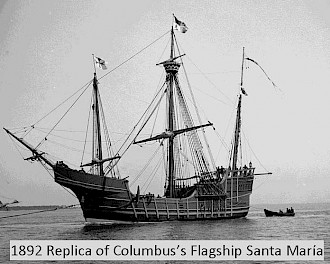 Between 1600 and 1814, Scriptures were translated into approximately 40 new languagesIrish (1602); Lithuanian (1625); Malay (1629); Samaritan (1632); Latvian (1637); Sami (1648); Wampanoag (1655); Nogai (1659); Siraya (1661); Modern French (1667); Upper Sorbian (1670); Vlaxian Romani (1670); Estonian (1686); Võro (1686); Lower Sorbian (1709); Tamil (1714); Sinhala (1739); Modern Georgian (1743); Inuit (1744); Deccan (1747); Manx (1748); Western Frisian (1755); Gaelic (1767); Berbice Creole Dutch (1781); Negerhollands (1781); Modern Turkish (1782); Mohawk (1787); Bengali (1800); Bosnian (1804); Urdu (1805); Hindi (1806); Marathi (1807); Sanskrit (1808); Gujarati (1809); Odia (1809); Labrador Eskimo (1810); Classical Chinese (1810); Malayalam (1811); Telugu (1812); Kannada (1812)., nearly the same quantity (30 languages) as in the period 1400–1600. This low growth is due to the fact that the early discoveries were made by Catholic nations that operated under the information monopoly of the Catholic Church. In response to the challenges of the Reformation, the Council of Trent (1545–1563) restated the importance of the Bible and made the Vulgate the official Catholic Bible, but remained neutralSee Bedouelle, G. (1989). “La réforme catholique”, in Le temps des Réformes et la Bible, edited by G. Bedouelle and B. Roussel, pp. 327–368. Paris: Éditions Beauchesne. on the issue of vernacular translations. Pope Gregory XV founded the Propaganda FideThe full name is Sacra Congregatio de Propaganda Fide (“Sacred Congregation for the Propagation of the Faith”). Pope John Paul II changed its name to Congregation for the Evangelization of Peoples in 1982. in 1622 with the aim of bringing all Catholic missionaries under one unified administration. In 1655, the Propaganda Fide prohibited by decree the publication of books by missionaries without prior permission. This decree made Bible versions in vernacular languages almost impossibleSee Kowalsky, N. (1966). “Die Sacra Congregatio de Propaganda Fide und die Übersetzung der Heiligen Schrift”, in Die Heilige Schrift in den katholischen Missionen, edited by J. Beckmann. Beckenried, Switzerland: Schöneck.. Requests made by Catholic missionaries to publish vernacular translations were routinely turned down, which resulted in a number of aborted projects and unpublished Bible versionsThis happened, for example, to the Missions Etrangères de Paris in 1670, which requested permission to translate the Bible into Chinese but was refused in 1673 (Kowalsky, 1966, pp. 31–32). When Father Jean Basset died in 1707, he had translated 80% of the New Testament into Chinese, but his version was not authorized for publication (Standaert, 1999, pp. 31–38). There are also reports of a New Testament translated into Japanese by Jesuits in 1613, but no copy survived as it does not appear to have been published (Soesilo, 2007, p. 164).. The only new languages into which Scriptures were translated between 1600 and 1814 were either (smaller) European languages or languages in America or Asia reached by the nascent Protestant missionsThe first language of the New World into which Scriptures were translated was Wampanoag, an Algonquian language spoken in Massachusetts and New Hampshire. The Puritan missionary John Elliot translated the whole Bible between 1655 and 1663. Albert Cornelisz Ruyl of the Dutch East Indies Company translated the Gospel of Matthew into Malay in 1629, which was the first portion of the Bible completed in an Asian language in early modern times. This translation was commissioned by the Dutch Reformed Church..
Between 1600 and 1814, Scriptures were translated into approximately 40 new languagesIrish (1602); Lithuanian (1625); Malay (1629); Samaritan (1632); Latvian (1637); Sami (1648); Wampanoag (1655); Nogai (1659); Siraya (1661); Modern French (1667); Upper Sorbian (1670); Vlaxian Romani (1670); Estonian (1686); Võro (1686); Lower Sorbian (1709); Tamil (1714); Sinhala (1739); Modern Georgian (1743); Inuit (1744); Deccan (1747); Manx (1748); Western Frisian (1755); Gaelic (1767); Berbice Creole Dutch (1781); Negerhollands (1781); Modern Turkish (1782); Mohawk (1787); Bengali (1800); Bosnian (1804); Urdu (1805); Hindi (1806); Marathi (1807); Sanskrit (1808); Gujarati (1809); Odia (1809); Labrador Eskimo (1810); Classical Chinese (1810); Malayalam (1811); Telugu (1812); Kannada (1812)., nearly the same quantity (30 languages) as in the period 1400–1600. This low growth is due to the fact that the early discoveries were made by Catholic nations that operated under the information monopoly of the Catholic Church. In response to the challenges of the Reformation, the Council of Trent (1545–1563) restated the importance of the Bible and made the Vulgate the official Catholic Bible, but remained neutralSee Bedouelle, G. (1989). “La réforme catholique”, in Le temps des Réformes et la Bible, edited by G. Bedouelle and B. Roussel, pp. 327–368. Paris: Éditions Beauchesne. on the issue of vernacular translations. Pope Gregory XV founded the Propaganda FideThe full name is Sacra Congregatio de Propaganda Fide (“Sacred Congregation for the Propagation of the Faith”). Pope John Paul II changed its name to Congregation for the Evangelization of Peoples in 1982. in 1622 with the aim of bringing all Catholic missionaries under one unified administration. In 1655, the Propaganda Fide prohibited by decree the publication of books by missionaries without prior permission. This decree made Bible versions in vernacular languages almost impossibleSee Kowalsky, N. (1966). “Die Sacra Congregatio de Propaganda Fide und die Übersetzung der Heiligen Schrift”, in Die Heilige Schrift in den katholischen Missionen, edited by J. Beckmann. Beckenried, Switzerland: Schöneck.. Requests made by Catholic missionaries to publish vernacular translations were routinely turned down, which resulted in a number of aborted projects and unpublished Bible versionsThis happened, for example, to the Missions Etrangères de Paris in 1670, which requested permission to translate the Bible into Chinese but was refused in 1673 (Kowalsky, 1966, pp. 31–32). When Father Jean Basset died in 1707, he had translated 80% of the New Testament into Chinese, but his version was not authorized for publication (Standaert, 1999, pp. 31–38). There are also reports of a New Testament translated into Japanese by Jesuits in 1613, but no copy survived as it does not appear to have been published (Soesilo, 2007, p. 164).. The only new languages into which Scriptures were translated between 1600 and 1814 were either (smaller) European languages or languages in America or Asia reached by the nascent Protestant missionsThe first language of the New World into which Scriptures were translated was Wampanoag, an Algonquian language spoken in Massachusetts and New Hampshire. The Puritan missionary John Elliot translated the whole Bible between 1655 and 1663. Albert Cornelisz Ruyl of the Dutch East Indies Company translated the Gospel of Matthew into Malay in 1629, which was the first portion of the Bible completed in an Asian language in early modern times. This translation was commissioned by the Dutch Reformed Church..
|
Interval |
Africa |
Americas |
Asia |
Europe |
Oceania |
Total |
|---|---|---|---|---|---|---|
|
260 BC-0 AD |
0 |
0 |
1 |
1 |
0 |
2 |
|
0-200 |
0 |
0 |
1 |
0 |
0 |
1 |
|
200-400 |
1 |
0 |
1 |
1 |
0 |
3 |
|
400-600 |
1 |
0 |
3 |
1 |
0 |
5 |
|
600-800 |
0 |
0 |
2 |
0 |
0 |
2 |
|
800-1000 |
0 |
0 |
0 |
3 |
0 |
3 |
|
1000-1200 |
0 |
0 |
0 |
0 |
0 |
0 |
|
1200-1400 |
0 |
0 |
1 |
7 |
0 |
8 |
|
1400-1600 |
0 |
0 |
5 |
25 |
0 |
30 |
|
1600-1814 |
0 |
7 |
18 |
15 |
0 |
40 |
|
Total |
2 |
7 |
32 |
53 |
0 |
94 |
Table 3: Translations of Scriptures before 1815
The inflection point in the history of worldwide Bible translation occurred in the year 1815 when eight new languages were added to the set of languages with Scriptures. Starting from that year, annual growth rates were constantly above one percent.
 The paradigm shift (1789–1830): The inflection point from low to high growth in Bible translation is due to the co-occurrence of three factors: Christian revivalism, internationalization, and industrialization. The nations that contributed most to worldwide Bible translation in the 19th century were those that had experienced revivalist movements and at the same time dominated successive waves of internationalization and industrialization. In the 18th century, Christian revivalism and secular enlightenment were two independent reactions to the authoritarian excesses of the state and the church. One sought solutions in divine resources, the other in human resources; one legitimized spiritual authority by biblical revelation, the other secular authority by human reason; one shaped the attitudes requisite for worldwide Bible dissemination, the other the attitudes required for an internationalization of human relations.
The paradigm shift (1789–1830): The inflection point from low to high growth in Bible translation is due to the co-occurrence of three factors: Christian revivalism, internationalization, and industrialization. The nations that contributed most to worldwide Bible translation in the 19th century were those that had experienced revivalist movements and at the same time dominated successive waves of internationalization and industrialization. In the 18th century, Christian revivalism and secular enlightenment were two independent reactions to the authoritarian excesses of the state and the church. One sought solutions in divine resources, the other in human resources; one legitimized spiritual authority by biblical revelation, the other secular authority by human reason; one shaped the attitudes requisite for worldwide Bible dissemination, the other the attitudes required for an internationalization of human relations.
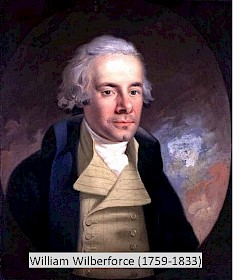 Church historians have characterized revival movements by their commitment to the Sola Scriptura principle of the Reformation and by their sense of missionBebbington (1989, pp. 2–3) calls these traits “biblicism” and “activitism”. Some religious historians in the United States have labeled this consciousness of revival movements “disinterested benevolence” and linked it to the theology of Samuel Hopkins (1721–1803) (see Elsbree, 1935; MacCormack, 1966; and Matthews, 1969). to reach out to the local community, the wider society, or distant peoples. Both this regard for the Bible and this sense of mission impel people to engage in Bible translation. In the 18th and 19th centuries, dozens of Christian revival movements swept across Europe and North America. Many were started by a prominent revival preacher and resulted in the formation of a mission or Bible society. In particular, the UK revival movements of the 18th century led to the formation of the Baptist Missionary SocietyThe Baptist Missionary Society (BMS), established in 1792 by 12 Baptist ministers in Kettering, UK, sent William Carey to India in 1793 as its first missionary. The missionary station that Carey established in Serampore organized the translation of Bible portions into more than 23 Asian languages during 1815–1914, bringing the total number of world languages with direct BMS involvement to 52 in this period (see Smith, 1885). in 1792, the London Missionary SocietyThe London Missionary Society (LMS) was founded in 1795 by a group of evangelical Anglicans and Congregationalists. Prominent LMS missionaries in the 19th and 20th centuries were Robert Morrison (China), David Livingston (Africa), and the 1924 Olympic Games gold medalist Eric Liddell (China). The LMS translated Scriptures for the first time into 26 languages. in 1795, the Church Mission SocietyThe Church Mission Society (CMS) was created in 1799 by a group of Anglican and evangelical Christians centered around William Wilberforce, a member of the British Parliament. Its original name, Society for Missions to Africa and the East, was changed to Church Mission Society in 1812. Between 1815 and 1914, the CMS supervised the translation of Bible portions into at least 52 languages (see Murray, 1985). in 1799, and the British and Foreign Bible SocietyA group that included William Wilberforce and Thomas Charles formed the British and Foreign Bible Society (BFBS) in 1804 to supply affordable Bibles to the people. From the outset, as its name indicates, it was not intended to serve only the churches in the United Kingdom, but to extend its agency into other parts of the world. The BFBS rarely engaged in Bible translation itself: BFBS employees translated portions of the Bible into only five languages between 1815 and 1914. During this period, however, the BFBS was the sole or main publisher of Bible portions in about 184 languages. It organized the publication process in about 150 languages by using printing facilities around the world. The BFBS set up 10 auxiliary Bible societies in Australia, Canada, India, and Indonesia responsible for publishing Bible portions in an additional 34 languages. Most of these auxiliary Bible societies turned into national Bible societies. For example, the Calcutta Auxiliary Bible Society of 1811 became the Bible Society of India in 1950, and the New South Wales Auxiliary Bible Society of 1827 became the Australian Bible Society. In the first 75 years of its existence, the BFBS published Bible portions in 33 languages before accelerating its output to 151 languages between 1880 and 1914. in 1804. North America saw the establishment of the American Board of Commissioners for Foreign MissionsThe American Board of Commissioners for Foreign Missions (ABCFM) was formed in 1810 by alumni of Williams College in Massachusetts who were part of a series of revivals in Northeast America at the beginning of the 19th century. The ABCFM, of Congregational origin, was the largest American mission agency of the 19th century. Missionaries of the ABCFM translated Scriptures into 20 languages for the first time. in 1810 and the American Bible SocietyThe American Bible Society (ABS) was founded in 1816 by several people, mainly politicians, including Elias Boudinot, Frederick Theodore Frelinghuysen, Daniel Coit Gilman, and John Jay. The ABS published Bible portions in languages in which American missionaries evangelized the native population. Like the BFBS, the ABS used printing facilities all over the world for its publications. According to The Book of a Thousand Tongues, the ABS printed Bible portions or whole Bibles in 65 languages for the first time. The Encyclopedia Americana of 1918 (Vol. 1, p. 501) mentions the translation of Scriptures into 164 languages by 1915, which also includes languages in which Scriptures were already translated (see Rines, 1918). in 1816. The revival movements are difficult to quantify due to their interconnectivity and uneven spread, but together they created a sea change in the attitudes toward Bible translation as a mass movement.
Church historians have characterized revival movements by their commitment to the Sola Scriptura principle of the Reformation and by their sense of missionBebbington (1989, pp. 2–3) calls these traits “biblicism” and “activitism”. Some religious historians in the United States have labeled this consciousness of revival movements “disinterested benevolence” and linked it to the theology of Samuel Hopkins (1721–1803) (see Elsbree, 1935; MacCormack, 1966; and Matthews, 1969). to reach out to the local community, the wider society, or distant peoples. Both this regard for the Bible and this sense of mission impel people to engage in Bible translation. In the 18th and 19th centuries, dozens of Christian revival movements swept across Europe and North America. Many were started by a prominent revival preacher and resulted in the formation of a mission or Bible society. In particular, the UK revival movements of the 18th century led to the formation of the Baptist Missionary SocietyThe Baptist Missionary Society (BMS), established in 1792 by 12 Baptist ministers in Kettering, UK, sent William Carey to India in 1793 as its first missionary. The missionary station that Carey established in Serampore organized the translation of Bible portions into more than 23 Asian languages during 1815–1914, bringing the total number of world languages with direct BMS involvement to 52 in this period (see Smith, 1885). in 1792, the London Missionary SocietyThe London Missionary Society (LMS) was founded in 1795 by a group of evangelical Anglicans and Congregationalists. Prominent LMS missionaries in the 19th and 20th centuries were Robert Morrison (China), David Livingston (Africa), and the 1924 Olympic Games gold medalist Eric Liddell (China). The LMS translated Scriptures for the first time into 26 languages. in 1795, the Church Mission SocietyThe Church Mission Society (CMS) was created in 1799 by a group of Anglican and evangelical Christians centered around William Wilberforce, a member of the British Parliament. Its original name, Society for Missions to Africa and the East, was changed to Church Mission Society in 1812. Between 1815 and 1914, the CMS supervised the translation of Bible portions into at least 52 languages (see Murray, 1985). in 1799, and the British and Foreign Bible SocietyA group that included William Wilberforce and Thomas Charles formed the British and Foreign Bible Society (BFBS) in 1804 to supply affordable Bibles to the people. From the outset, as its name indicates, it was not intended to serve only the churches in the United Kingdom, but to extend its agency into other parts of the world. The BFBS rarely engaged in Bible translation itself: BFBS employees translated portions of the Bible into only five languages between 1815 and 1914. During this period, however, the BFBS was the sole or main publisher of Bible portions in about 184 languages. It organized the publication process in about 150 languages by using printing facilities around the world. The BFBS set up 10 auxiliary Bible societies in Australia, Canada, India, and Indonesia responsible for publishing Bible portions in an additional 34 languages. Most of these auxiliary Bible societies turned into national Bible societies. For example, the Calcutta Auxiliary Bible Society of 1811 became the Bible Society of India in 1950, and the New South Wales Auxiliary Bible Society of 1827 became the Australian Bible Society. In the first 75 years of its existence, the BFBS published Bible portions in 33 languages before accelerating its output to 151 languages between 1880 and 1914. in 1804. North America saw the establishment of the American Board of Commissioners for Foreign MissionsThe American Board of Commissioners for Foreign Missions (ABCFM) was formed in 1810 by alumni of Williams College in Massachusetts who were part of a series of revivals in Northeast America at the beginning of the 19th century. The ABCFM, of Congregational origin, was the largest American mission agency of the 19th century. Missionaries of the ABCFM translated Scriptures into 20 languages for the first time. in 1810 and the American Bible SocietyThe American Bible Society (ABS) was founded in 1816 by several people, mainly politicians, including Elias Boudinot, Frederick Theodore Frelinghuysen, Daniel Coit Gilman, and John Jay. The ABS published Bible portions in languages in which American missionaries evangelized the native population. Like the BFBS, the ABS used printing facilities all over the world for its publications. According to The Book of a Thousand Tongues, the ABS printed Bible portions or whole Bibles in 65 languages for the first time. The Encyclopedia Americana of 1918 (Vol. 1, p. 501) mentions the translation of Scriptures into 164 languages by 1915, which also includes languages in which Scriptures were already translated (see Rines, 1918). in 1816. The revival movements are difficult to quantify due to their interconnectivity and uneven spread, but together they created a sea change in the attitudes toward Bible translation as a mass movement.
In the narrow time window between the French Revolution (1789) and the beginning phase of the Concert of Europe (1830), two philosophers, Jeremy Bentham and Emmanuel Kant, developed visionary ideas about international relations. For both, the space of the “international” was lawless and desperately in need of regulation. 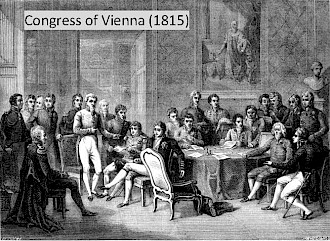 The Englishman Bentham, who coined the term “international”, advocated a system of lawsBentham coined the term “international” in An Introduction to the Principles of Morals and Legislation (1789). He had already outlined in 1786 a system of international laws in A plan for a Universal and Perpetual Peace (see Janis, 1984). that would bind the conduct of nations. Against the backdrop of the disorder of the French Revolution, Kant went a step further and argued in his essay Zum ewigen Frieden [Perpetual Peace] that the international space should be shaped by a law of nations backed up by a federation of free statesThese ideas are expressed in Kant’s essay of 1795 Zum ewigen Frieden. Ein philosophischer Entwurf, translated into English as To Perpetual Peace: A Philosophical Sketch. The philosopher Gottfried Leibniz had already expressed his wishes for a European federation of states a century earlier (see Loemker, 1969, p. 58, footnote 9).. Bentham and Kant’s ideas inspired the architects of the Concert of Europe (1815–1878), which was mankind’s first truly international institutionKlemenz Wenzel von Metternich and his colleagues were also influenced by Lord Grenville, Prime Minister of the United Kingdom during 1806–1807, who had drawn up plans for institutionalized meetings of European politicians (see Sherwig, 1962).. Its establishment by the Congress of Vienna in 1815 in the wake of the Napoleonic Wars was a watershed in international relations. Although the Concert of Europe eventually failed, it became the reference point for continuous internationalization efforts until the present day. Mark Mazower admirably describes in his chapter Under the Sign of the InternationalSee Mazower, Marc (2012). Governing the World: The History of an Idea. New York: The Penguin Press, pp. 13–30. how the Concert of Europe appealed to the aspirations of the European public and opened an era that aroused interest in international affairs.
The Englishman Bentham, who coined the term “international”, advocated a system of lawsBentham coined the term “international” in An Introduction to the Principles of Morals and Legislation (1789). He had already outlined in 1786 a system of international laws in A plan for a Universal and Perpetual Peace (see Janis, 1984). that would bind the conduct of nations. Against the backdrop of the disorder of the French Revolution, Kant went a step further and argued in his essay Zum ewigen Frieden [Perpetual Peace] that the international space should be shaped by a law of nations backed up by a federation of free statesThese ideas are expressed in Kant’s essay of 1795 Zum ewigen Frieden. Ein philosophischer Entwurf, translated into English as To Perpetual Peace: A Philosophical Sketch. The philosopher Gottfried Leibniz had already expressed his wishes for a European federation of states a century earlier (see Loemker, 1969, p. 58, footnote 9).. Bentham and Kant’s ideas inspired the architects of the Concert of Europe (1815–1878), which was mankind’s first truly international institutionKlemenz Wenzel von Metternich and his colleagues were also influenced by Lord Grenville, Prime Minister of the United Kingdom during 1806–1807, who had drawn up plans for institutionalized meetings of European politicians (see Sherwig, 1962).. Its establishment by the Congress of Vienna in 1815 in the wake of the Napoleonic Wars was a watershed in international relations. Although the Concert of Europe eventually failed, it became the reference point for continuous internationalization efforts until the present day. Mark Mazower admirably describes in his chapter Under the Sign of the InternationalSee Mazower, Marc (2012). Governing the World: The History of an Idea. New York: The Penguin Press, pp. 13–30. how the Concert of Europe appealed to the aspirations of the European public and opened an era that aroused interest in international affairs.
The First Industrial Revolution (1780?–1840)—the transition from hand to machine production made possible by innovations in steam power and fuel techniques—primarily affected textile production and metallurgy. Innovations originated in the United Kingdom and were exported to the European continent after a short delay, first to Belgium, then to France, Germany, Scandinavia, and so forth. Although this first wave of industrialization had no direct effect on the number of Scripture translations, it laid the ground for the Second Industrial Revolution (1870–1914), which directly enabled an increase in Bible translations.
Sustained high growth (1815–1914): Between 1815 and 1914, Scriptures were translated into a total of 478 new languages, five times more languages than had been accomplished in the preceding 2000 years. The total number of languages with Scriptures grew to 572 by the year the First World War broke out.
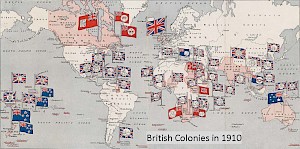 In the 19th century, the most important structural unit for missionary outreach was the nation state not the mission agency, while in the 20th century this hierarchy was reversed. The reason for this shift lies in the gradual acquisition of international experience. For the purpose of war prevention, the Concert of Europe worked reasonably well until the Crimean War broke out in 1853 and pitted member states against one another, the Russians against the British and French. For projects like exploration, trade, and evangelization, the concept of a 19th-century–style corporation like the Concert of Europe appears insufficient. Such endeavors require a high level of mutual trust between nations, which did not exist in the 19th century. It was more effective to use the infrastructure of each nation state. European key players thus expected to gain more from pursuing colonial empires than from seeking a synergism of forces.
In the 19th century, the most important structural unit for missionary outreach was the nation state not the mission agency, while in the 20th century this hierarchy was reversed. The reason for this shift lies in the gradual acquisition of international experience. For the purpose of war prevention, the Concert of Europe worked reasonably well until the Crimean War broke out in 1853 and pitted member states against one another, the Russians against the British and French. For projects like exploration, trade, and evangelization, the concept of a 19th-century–style corporation like the Concert of Europe appears insufficient. Such endeavors require a high level of mutual trust between nations, which did not exist in the 19th century. It was more effective to use the infrastructure of each nation state. European key players thus expected to gain more from pursuing colonial empires than from seeking a synergism of forces.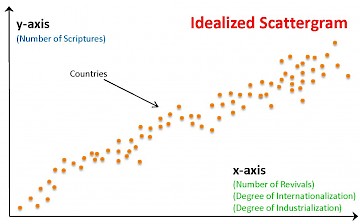
Historical data for 1815–1914 demonstrate a correlation between the number of Bible translations on the one side and the number of revival movements, the degree of internationalization, and the degree of industrialization on the other side. The more revival movements a country experienced, the higher its degree of internationalization, and the greater its level of industrialization, the more languages there were in which missionaries of that country produced Bible translations (see scattergram).
A country’s degree of internationalization can be measured by the extent of its colonial possessions, or even better by the number of languagesThe colonies varied in their potential for Bible translation. Greater-Siberia, for example, an area of 13,100,000 km2, was part of Russia since the 17th century, while Indonesia, a country of only 1,904,569 km2, was a Dutch colony until the Second World War. With a population speaking 43 languages, Siberia’s potential for Bible translation, despite its greater size, was much smaller than Indonesia’s, where 701 indigenous languages were spoken. spoken in its colonies. This number provides an upper limit of the Scripture translations the missionaries of a country could have achieved in the best of all possible worlds. A country’s level of industrialization is more difficult to quantify.  The second industrial revolution (1870–1914) was characterized by technological innovations that improved the mobility of people, information, and goods. The construction of steamships and railroad networks enabled Bible translators to travel easily to their target areas. The installation of telegraphic cable networksThe electric telegraph using Morse code gave rise to the first global communication system. The first telegraphic device, put into operation in 1844 between Washington and Baltimore, led to a surge in investments by colonial powers to forge closer links with their colonies and, not incidentally, to exert greater and more effective colonial control. The first undersea electric cable linked Britain to the European continent in 1851. Other cables connected Europe to the USA in 1866 and France to North Africa in 1871. The United Kingdom dominated the submarine cable business until the First World War. This dominance concerned other European powers as it strengthened the British grip on the commercial and financial networks (see Hanson, E. C., 2008. The information revolution and world politics. Lanham: Rowman and Littlefield Publishers. overland and undersea provided missionaries, among other beneficiaries, the opportunity to exchange timely information. The use of mobile steam-driven printing presses increased the circulation of translated Bibles. While these technologies enhanced the prospects for Bible translation projects, control and access to them was unevenly distributed. Countries fall into three categories:
The second industrial revolution (1870–1914) was characterized by technological innovations that improved the mobility of people, information, and goods. The construction of steamships and railroad networks enabled Bible translators to travel easily to their target areas. The installation of telegraphic cable networksThe electric telegraph using Morse code gave rise to the first global communication system. The first telegraphic device, put into operation in 1844 between Washington and Baltimore, led to a surge in investments by colonial powers to forge closer links with their colonies and, not incidentally, to exert greater and more effective colonial control. The first undersea electric cable linked Britain to the European continent in 1851. Other cables connected Europe to the USA in 1866 and France to North Africa in 1871. The United Kingdom dominated the submarine cable business until the First World War. This dominance concerned other European powers as it strengthened the British grip on the commercial and financial networks (see Hanson, E. C., 2008. The information revolution and world politics. Lanham: Rowman and Littlefield Publishers. overland and undersea provided missionaries, among other beneficiaries, the opportunity to exchange timely information. The use of mobile steam-driven printing presses increased the circulation of translated Bibles. While these technologies enhanced the prospects for Bible translation projects, control and access to them was unevenly distributed. Countries fall into three categories:
-
Traditional countries: countries with no or limited access to the technologies (e.g. Brazil, China, Iran);
-
Sovereign countries: countries with access to the technologies and with the ability to build transport and information networks on the territory they controlled (e.g. Western European countries, USA);
-
Hegemonic countries: sovereign countries that additionally dominated the networks built between nations and empires (i.e. United Kingdom).
Table 4 presents a list of the countries that contributed to the translation of Scriptures between 1815 and 1914. The queen in this league is the United Kingdom: it experienced the highest number of revival movements, it had access through its colonial empire to the highest number of languages, it was the hegemon of the international communication networks, and, in keeping with the pattern of the historical data, it was also far and away the most productive country in terms of Bible translation.
Worldwide Bible translation in the 19th century is thus strongly dominated by Anglo-Saxon countries with 67% of all new translations, roughly 315 of 472, produced by translators of these countries.
 Explosive growth (1915–today): The number of languages into which Scriptures have been translated quintupled in the last hundred years, numbering 2850 in 2013, compared with 572 in 1914. Bible portions or whole Bibles were completed in 2278 languages between 1915 and 2013, a phenomenal acceleration. The Anglo-Saxon supremacy has become even more overwhelming with 83% of all new language translations, approximately 1901 of 2278, accomplished by Anglo-Saxon agencies.
Explosive growth (1915–today): The number of languages into which Scriptures have been translated quintupled in the last hundred years, numbering 2850 in 2013, compared with 572 in 1914. Bible portions or whole Bibles were completed in 2278 languages between 1915 and 2013, a phenomenal acceleration. The Anglo-Saxon supremacy has become even more overwhelming with 83% of all new language translations, approximately 1901 of 2278, accomplished by Anglo-Saxon agencies.
The dynamics of these increases differ from those of the 19th century. Christian revival movements no longer constitute a measurable force for two reasons. Firstly, while the 20th century saw two major revival movements—the Pentecostal and Charismatic movementsThe Azusa Street Revival of 1906 in Los Angeles is considered the start of the first Pentecostal Movement (1906–1960). It led to the formation of a worldwide network of Assemblies of God, the first of which was established in the USA in 1914. The second Pentecostal Movement (after 1960), often referred to as the Charismatic Movement, is a revival movement within the established Protestant, Catholic, and Orthodox denominations. It did not result in the establishment of an independent denomination (see Menzies and Menzies, 2000). that led to the formation of missions such as the Assembly of God Mission—these movements contributed only a small share of the total Scripture output, about 14This number refers to the number of translations accomplished by members of the Assemblies of God Missions (AGM). The number of translations contributed by members of the Pentecostal and Charismatic movements as a whole might be significantly higher than 14 due to the fact that Charismatic missionaries often enrolled with interdenominational mission agencies that specialized in Bible translation (e.g. Wycliffe Bible Translators). Precise statistics are not available or derivable. out of 2278 new translations. Second, due to global migration and information technology some conversion movements among unevangelized populations fed backIn the 20th century, African immigrants established fervent Christian churches in European and North-American cities which interacted with local Western churches. to Western countries. The boundary between cause (revival in base country) and effect (conversion in target country) thus became blurred. For these reasons, variation in revival movements cannot be used to explain variation in the number of translated Bibles.
 The spread of information technology is one important factor that has contributed to the rapid growth of Scriptures. Three types of technological innovations particularly fostered translation projects by industrializing parts of the procedure and reducing the time required to produce a translation: personal computer technologiesApple II computers began mass production in 1977, launching the personal computer industry. IBM entered and quickly dominated the market with MS-DOS after 1981. Word processing and database software were among the first applications running on personal computers. Because every Bible translation project requires a dictionary and a writing system, if these are not available the translator must create them, which is a time-consuming task. PC technologies dramatically reduced the time needed for production of these tools. In 1989, for example, the Summer Institute of Linguistics introduced a dictionary software called Shoebox, the name of which alludes to the traditional way field linguists stored lexical data on cards. In 2003, the United Bible Societies and the Summer Institute of Linguistics jointly developed the translator software Paratext, which packages in one display a selection of Bible versions and exegetical help. (e.g. word processing, database management); encoding technologies for writing systemsISO 8859 and the improved Unicode are industrial standards for encoding the characters of writing systems. Unicode, for example, contains codes for 120,000 characters covering 129 modern and historic writing systems. Unicode is used in most operating systems and allows characters to be available in ordinary word processors. (e.g. based on ISO 8859 or Unicode); and internet and mobile technologiesDuring 1980–2013, internet and mobile technologies developed in a series of cascading innovations (Hanson, 2008, pp. 48–69): The first satellite was launched into a geosynchronous orbit in 1963; ARPANET (Advanced Research Projects Agency Network), the first computer network which was operated by the US Department of Defense, began service in 1969; the first fiber-optic cable across the Atlantic Ocean went into service in 1988; the Word Wide Web was invented by Tim Berners-Lee (CERN) in Switzerland in 1989; handheld mobile telephones were first developed in the early 1990s. These technologies transformed the process of Bible translation. Revisions of a Bible text, for example, can be easily exchanged, video-conferencing can bring together a translation committee scattered over three continents, and so forth. (e.g. traffic of texts, data, audio, and video). These technologies have had a measurable effect on the time needed to complete a given translation project. New Testament projects begun after 1980 took half as long as those initiated before 1980. For complete Bible projects, the time savings is even more dramatic: one third of the time needed before 1980 is required for the same task after 1980.
The spread of information technology is one important factor that has contributed to the rapid growth of Scriptures. Three types of technological innovations particularly fostered translation projects by industrializing parts of the procedure and reducing the time required to produce a translation: personal computer technologiesApple II computers began mass production in 1977, launching the personal computer industry. IBM entered and quickly dominated the market with MS-DOS after 1981. Word processing and database software were among the first applications running on personal computers. Because every Bible translation project requires a dictionary and a writing system, if these are not available the translator must create them, which is a time-consuming task. PC technologies dramatically reduced the time needed for production of these tools. In 1989, for example, the Summer Institute of Linguistics introduced a dictionary software called Shoebox, the name of which alludes to the traditional way field linguists stored lexical data on cards. In 2003, the United Bible Societies and the Summer Institute of Linguistics jointly developed the translator software Paratext, which packages in one display a selection of Bible versions and exegetical help. (e.g. word processing, database management); encoding technologies for writing systemsISO 8859 and the improved Unicode are industrial standards for encoding the characters of writing systems. Unicode, for example, contains codes for 120,000 characters covering 129 modern and historic writing systems. Unicode is used in most operating systems and allows characters to be available in ordinary word processors. (e.g. based on ISO 8859 or Unicode); and internet and mobile technologiesDuring 1980–2013, internet and mobile technologies developed in a series of cascading innovations (Hanson, 2008, pp. 48–69): The first satellite was launched into a geosynchronous orbit in 1963; ARPANET (Advanced Research Projects Agency Network), the first computer network which was operated by the US Department of Defense, began service in 1969; the first fiber-optic cable across the Atlantic Ocean went into service in 1988; the Word Wide Web was invented by Tim Berners-Lee (CERN) in Switzerland in 1989; handheld mobile telephones were first developed in the early 1990s. These technologies transformed the process of Bible translation. Revisions of a Bible text, for example, can be easily exchanged, video-conferencing can bring together a translation committee scattered over three continents, and so forth. (e.g. traffic of texts, data, audio, and video). These technologies have had a measurable effect on the time needed to complete a given translation project. New Testament projects begun after 1980 took half as long as those initiated before 1980. For complete Bible projects, the time savings is even more dramatic: one third of the time needed before 1980 is required for the same task after 1980.
|
|
1815-1914 |
1915-1979 |
1980-2013 |
|---|---|---|---|
|
New Testament project |
37.66 |
22.84 |
10.75 |
|
Bible project |
60.49 |
45.82 |
15.79 |
Table 5: Mean length of translation projects in yearsThe length of a New Testament/Bible project is calculated as the publication year of the New Testament/Bible minus the publication year of the first book. The mean length is the mathematical mean of all project lengths (see Table 5). It is also interesting to note that the standard deviation of the means has constantly decreased in the past 200 years. The standard deviation is a measure of how much individual translation projects differ from the mean project length. The standard deviation for New Testament projects is as follows:
41 (1815–1914);
16.75 (1915–1979); and
6.1 (1980–2013).
For Bible projects the standard deviation is:
41.36 (1815–1914);
18.94 (1915–1979); and
6.17 (1980–2013).
The decrease of standard deviation reveals how technology use has formalized the translation projects by reducing time variation among them.
US companies have quasi-monopolies over most of these technologies. This has given Bible agencies based in North America, in particular the Summer Institute of Linguistics and the United Bible Societies, the advantage of building translation applications ahead of others. Bible translation became a multi-skill profession, for which traditional missions were increasingly unable to provide infrastructure. This explains in part why a wide range of Christian missions dropped out of the business of Bible translation after 1980 and why a few Anglo-Saxon agencies have come to dominate the field (see Table 6).
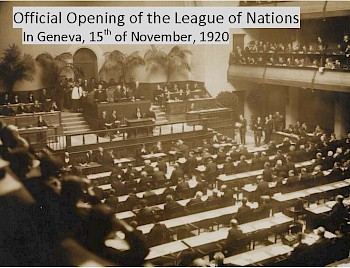 The second important factor for runaway growth in Bible translation is the degree of internationalization of the translation agencies. Nineteenth-century–style colonialism artificially inflated the European nations by temporally injecting the resources of another population. Colonialism eventually carries the seed of war. After the horrors of two world wars, the world needed a new Concert of Europe. The call was answered by the formation of many international institutions: the League of Nations, the European Union, the United Nations, and countless IGOs (e.g. International Organization for Standardization) and NGOs (e.g. Greenpeace). Emmanuel Kant’s 200-year-old vision of a federal union of states that would govern the lawless space of the “international” came closer to fulfillment, but it was a gradual and uneven process. For Christian missions and Bible societies, three organizational models surfaced in the 20th century, reflecting different degrees of internationalization.
The second important factor for runaway growth in Bible translation is the degree of internationalization of the translation agencies. Nineteenth-century–style colonialism artificially inflated the European nations by temporally injecting the resources of another population. Colonialism eventually carries the seed of war. After the horrors of two world wars, the world needed a new Concert of Europe. The call was answered by the formation of many international institutions: the League of Nations, the European Union, the United Nations, and countless IGOs (e.g. International Organization for Standardization) and NGOs (e.g. Greenpeace). Emmanuel Kant’s 200-year-old vision of a federal union of states that would govern the lawless space of the “international” came closer to fulfillment, but it was a gradual and uneven process. For Christian missions and Bible societies, three organizational models surfaced in the 20th century, reflecting different degrees of internationalization.
-
Mononational organizations are founded in one country with a workforce recruited from that country. Almost all mission agencies not based in an Anglophone country have been operating as mononational organizations in the 20th century (e.g. the German Rhenish Missionary Society). Many agencies established in the UK or USA started as mononational organizations but later shifted to a multinational mode. The African Inland Mission, for example, was formed in the USA in 1895 and employed almost exclusively North-American missionaries until 1970, when it opened recruiting centers in 10 other countries including Hong Kong and Brazil.
-
Multinational organizations are established in one country with a workforce recruited from many countries. These organizations emerged in the 20th century in the USA and to a lesser degree in the UK. The pattern is almost always the same. A person with a clear business model or an inspiring life story establishes a dynamic home base. After several years, recruiting centers open in Europe, generally beginning in the UK, next moving to the Netherlands or Germany and then to other European countries. When the European centers operate successfully, new bases are established on other continents depending on the field of activity and on a country’s general orientation. Although the North American staff usually outnumbers the personnel from all other countries combined, organizations tend to apply to themselves the label “international” or “global”.
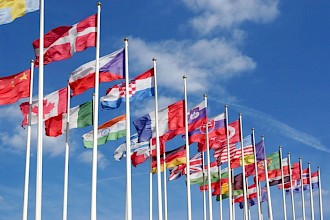 This, for example, is the story of the Wycliffe Bible Translators, the most productive translation agency of all time (see Table 6).
This, for example, is the story of the Wycliffe Bible Translators, the most productive translation agency of all time (see Table 6). -
Confederal organizations are international organizations established by organizations from different nations united for the purpose of common action. Confederal organizationsConfederations allow their members to retain their independence, whereas federations are close unions whose members surrender their autonomy., in contrast to multinational organizations, deserve the title of “international” in the sense that Jeremy Bentham originally envisioned. The only confederal Bible agency is the United Bible Societies, established from 152 national Bible societies (see Table 6).
Table 6 presents the most active organizations in each category in terms of translation output. A noteworthy shift occurred in the late 1960s. Mononational organizations, in spite of their continued existence, became unproductive and stopped translating Scriptures into new languages (with some exceptions). On the other hand, multinational and confederal organizations that were nonexistent or insignificant before 1970 became important contributors thereafter.
| Organization | Translated Languages | Country of Origin | Degree of Internationalization | |||
|---|---|---|---|---|---|---|
| 1915–1968 | 1969–2013 | |||||
| Christian and Missionary Alliance | 31 | 1 | USA/Canada (1897) | Mononational | ||
| ||||||
| Sudan United Mission | 30 | 0 | UK (1902) | Mononational | ||
| ||||||
| Church Mission Society | 25 | 0 | UK (1799) | Mononational | ||
| ||||||
| Methodist Missions Society | 21 | 0 | UK (1932) | Mononational | ||
Methodist Missions Society: Between 1804 and 1818, a group including Thomas Coke (1747–1814), the first Methodist Superintendent, formed the Wesleyan Methodist Missionary Society (WMMS) in London. The WMMS set up mission stations in dozens of countries worldwide and its missionaries translated Scriptures into 24 new languages during 1815–1914. Several smaller denominations seceded from the Wesleyan | ||||||
| Sudan Interior Mission | 19 | 0 | USA (1893) | Mononational | ||
| ||||||
| Africa Inland Mission | 17 | 0 | USA (1895) | Mononational | ||
| ||||||
| Other Anglo-Saxon Missions | 163 | 23 | --- | Mononational | ||
Other Anglo-Saxon Missions: American Baptist Foreign Mission Society 16 (1915–1968) / 0 (1969–2013); Brethren Mission 15 / 1; China Inland Mission/Overseas Missionary Fellowship 10 / 0; Unevangelized Fields Mission 8 / 2; Christian Missions in Many Lands 9 / 0; London Missionary Society 9 / 0; Wesleyan Methodist Missionary Society 7 / 0; United Christian Bookstores 0 / 7; North East India General Mission 6 / 0; American Presbyterian Mission 5 / 0; British and Foreign Bible Society 5 / 0; Central American Mission 5 / 0; Asia Pacific Christian Mission 0 / 4; Bible Churchmen's Missionary Society/Crosslinks 3 / 1; Borneo Evangelical Mission 4 / 0; Mennonite Mission 4 / 0; South Africa General Mission 4 / 0; American Lutheran Mission 3 / 0; Baptist Missionary Society (British) 3 / 0; Central Asian Mission 3 / 0; Church of Scotland Mission 3 / 0; Gospel Missionary Union 3 / 0; Scripture Gift Mission 0 / 3; Seventh Day Adventist Mission 3 / 0; Universities' Mission to Central Africa 3 / 0; United Presbyterian Mission 3 / 0; Watchtower Bible and Tract Society 0 / 3; South American Indian Mission 3 / 0; South American Missionary Society 3 / 0; American Methodist Mission 2 / 0; Congo Balolo Mission 2 / 0; Congo Evangelistic Mission 2 / 0; Lutheran Brethren Mission 2 / 0; South Sea Evangelical Mission 2 / 0; Ubangi Evangelical Mission 2 / 0; Unevangelized Africa Mission 2 / 0; World Literature Crusade 0 / 2; American Evangelical Alliance Mission 1 / 0; Anglican New Guinea Mission 1 / 0; Church of God Mission 1 / 0; Dutch Reformed Church Mission 1 / 0; New Hebrides Mission 1 / 0; Society for the Propagation of the Gospel 1 / 0; Welsh Presbyterian Church 1 / 0; World Missions 1 / 0; Worldwide Evangelization Crusade 1 / 0. | ||||||
| Other non-Anglo-Saxon Missions | 47 | 51 | --- | Mononational | ||
Other non-Anglo-Saxon Missions: Yayasan Sumber Sejahtera Indonesia 0 (1915–1968) / 23 (1969–2013); Roman Catholic 16 / 3; Cameroon Bible Translation Association and Literacy 0 / 16; Various Swedish Mission 6 / 0; Basel Missionary Society 5 / 0; Paris Evangelical Mission Society 5 / 0; Universitas Kristen Indonesia Tomohon 0 / 5; Brazilian Bible Press 0 / 4; Netherlands Bible Society 4 / 0; Swedish Lutheran Mission 4 / 0; Mission Oubangi-Chari (France) 3 / 0; Berlin Missionary Society 2 / 0; Moravian Mission 1 / 0; Vandsburger Mission 1 / 0. | ||||||
| SIL/Wycliffe/JAARS/Seed | 172 | 436 | USA (1936) | Multinational | ||
| ||||||
| [World Home] Bible League | 0 | 248 | USA (1938) | Multinational | ||
| ||||||
| International Bible Society | 0 | 128 | USA (1809) | Multinational | ||
International Bible Society (Biblica): The New York Bible Society (NYBS), the predecessor of the International Bible Society (IBS), was founded in New York in 1809 by a small group including Henry RutgersHenry Rutgers (1745-1830). Rutgers University was named after him., William ColgateWilliam Colgate, 1783-1857, a business man who founded the Colgate toothpaste company., and Theodorus Van Wyke. The NYBS absorbed the New York Auxiliary Bible Society in 1819 and experienced several splits and mergers until 1840 when it joined forces with the Marine Bible Society. It remained a local Bible publisher for the first 160 | ||||||
| New Tribes Mission | 21 | 19 | USA (1942) | Multinational | ||
| ||||||
| Institute for Bible Translation | 35 | Sweden (1973) | Multinational | |||
| ||||||
| United Bible Societies | 0 | 23 | --- (1946) | Confederal | ||
United Bible Societies: The United Bible Societies (UBS) is an association of 152 Bible societies, each of which represents a different country or territory. The UBS was established in 1946 by 13 national Bible societies. The British and Foreign Bible Society (BFBS) played a particularly important role in the making of the UBS. The BFBS was established in 1804 and systematically set up Auxiliary Bible Societies throughout the British Empire | ||||||
| Bible Society of Papua New Guinea | 54 | Papua New Guinea (1985) | Confederal | |||
| Indonesian Bible Society | 1 | 38 | Indonesia (1814) | Confederal | ||
| Bible Society of India | 16 | India (1811) | Confederal | |||
| Bible Society of Cameroon | 15 | Cameroon (1959) | Confederal | |||
| Bible Societies of Other Countries | 133 | --- | Confederal | |||
Table 6 clearly shows that multinational organizations from the United States (in particular SIL/WBT) have been more efficient than mononational and confederal organizations (i.e. United Bible Societies). This trend mirrors other areas of international activity in which multinational corporations from the USA pull the strings. Some authors portray this dominance as minority ruleSee Chua, A., 2003. World on Fire. New York: Anchor Books (Random House), pp. 147–162 and 229–258. and warn against a future backlash. As far as Bible translation is concerned, there is indeed a tension between the status quo and one central doctrine of the Bible. The dominance of Anglo-Saxon agencies in the 20th century suggests that the nationality of the messenger matters, whereas the Bible assures the reader that it is not so (“there is no difference between Jew and Greek”, Romans 10:12). In spite of this tension, it is too early to draw a conclusion as the history of worldwide Bible translation is still ongoing. Things might look differently from a future perspective.
In summary, the positive feedback cycle for translation growth in the 20th century includes two enabling factors: Firstly, Anglo-Saxon dominance of Bible projects built upon Anglo-Saxon dominance in information technologies; secondly, the multinational and confederal structure of the translation agencies. A third factor, Christian revivalism, might have played an additional role, but cannot be measured.
Predictions
The graphs in section 2 are based on empirical quantities compiled for each year. The number of translations resembles an exponential curve for which we can calculate the formula. Here is the definition of an exponential function.
Definition: A quantity q depends exponentially on time t, if there are real numbers a > 0 and b > 1 such that
Parameters:
a = qs is the initial quantity at starting time ts (260 BC).
b = the constant growth factor by which the amount q increases per time increment c.
c = the constant time increment in which the quantity q increases by factor b.
ts = starting time, when the Septuagint (260 BC) was completed: qs = q(-260) = 1.
it = time of inflection point (1815 AD). We have qi = q(1815) = 101.
te = time of endpoint (currently 2016 AD). We have qe = q(2016) = 3033.
An exponential function is sufficiently specified if two time-quantity pairs are provided, for example the quantity at the inflection point and the quantity at the endpoint. The inflection point is the point of a curve at which the direction changes, in this case the point at which the number of translations accelerates significantly. Annual increments below 1 deliver low growth, increments above 1 lead to high growth. The endpoint is the time at which the growth process stops, either by necessity or by convenience. The current endpoint is the year 2016, the last year for which we have data. Let us determine the inflection point. For a differentiable function q(t), the inflection pointIn mathematics, the inflection point of a curve f(x) is the point (z, f(z)) where the second derivation f''(z) = 0. In general, there might be no, one, or more than one inflection point. In our case, the second derivation of an exponential function cannot be zero and an exponential function thus cannot have an inflection point in the mathematical sense. However, we use the term “inflection point” here in a more colloquial sense. The inflection point of a curve f(x) is the point where growth accelerates from a gradient below 1 to a gradient over 1. In other words, it is the point (z, f(z)) where the first derivation f'(z) = 1. is the point ti such that the first derivation q'(ti). However, since our empirical data are discrete, we must look for the time ti at which the gradient switches from less than 1 to greater than 1:
| For almost all t < ti, the gradient m < 1, or more precisely |
|
| For almost all t ≥ ti, the gradient m ≥ 1, or more precisely |
A computer program that we developed establishes 1815 AD as the inflection point. Between 260 BC and 1815 AD, the annual increments are consistently below 1 with very few exceptions. Beginning in 1815, the number of Bible translations grows annually with increments of more than 1, again with very few exceptions. Now, we can determine the exponential function q(t) and its inverse logarithm function t(q). Choosing b = 2 as the base in order to express the growth process as a doubling process yields the following formulas:
The calculation of q(t) and t(q):
The constant a and c can be calculated with fairly standard mathematical methods and formulas. For the two time-quantity pairs (ti, qi) = (1815, 101); (te, qe) = (2016, 3033), we have
The formulas of World Wide Bible Translation:
| (i) Time-Quantity Function | (ii) Quantity-Time Function | ||
|
|
|||
In the history of worldwide Bible Translation, the number of languages with Scriptures has doubled every 41 years. If current trends continue, then by 2026, 3,500 languages will have a portion of the Bible translated; by 2072 all 7,881 languages on earth will have Scriptures available.
Conclusion
 We have argued for the rise of Islam and the information monopoly of the Catholic Church to be mainly responsible for the low growth in Scripture translation between 260 BC and 1815 AD. After 1815, the number of languages with Scriptures has substantially risen due to a combination of three factors: Christian revivalism, internationalization and industrialization. In the 20th century, growth has been explosive because of the emergence of new information technologies and the creation of a quasi-monopoly by a few Anglo-Saxon translation agencies. The history of pioneer Bible translation ends when the last language in need of Bible translation has access to a native version. It is difficult to establish the exact number of needy languages as many small languages are undergoing rapid transformation in the 21st century. According to cautious estimates, the number might lie between 3,500 and 3,800 languages, two targets that might be reached between 2026 and 2031 respectively if current trends persist.
We have argued for the rise of Islam and the information monopoly of the Catholic Church to be mainly responsible for the low growth in Scripture translation between 260 BC and 1815 AD. After 1815, the number of languages with Scriptures has substantially risen due to a combination of three factors: Christian revivalism, internationalization and industrialization. In the 20th century, growth has been explosive because of the emergence of new information technologies and the creation of a quasi-monopoly by a few Anglo-Saxon translation agencies. The history of pioneer Bible translation ends when the last language in need of Bible translation has access to a native version. It is difficult to establish the exact number of needy languages as many small languages are undergoing rapid transformation in the 21st century. According to cautious estimates, the number might lie between 3,500 and 3,800 languages, two targets that might be reached between 2026 and 2031 respectively if current trends persist.
Appendix
In a comprehensive review of the Ethnologue 16th, 17th and 18th editions (E16, E17, E18), Hammerström (2015)See Hammarström, H., 2015, “Ethnologue 16/17/18th editions: A comprehensive review.” Language, 91(3), 723–737. evaluates this reference work positively but points out the lack of information sources for many data. E16, E17 and E18 use ‘mutual intelligibility’ and ‘shared ethnolinguistic identity’ as definitional criteria for drawing a distinction between dialects and languages. In the application of these criteria, there were a number of difficult cases. The linguists Morey, Post, and Friedman (2013)See Morey, S., M. Post and V. Friedman (2013). The language codes of ISO 639: A premature, ultimately unobtainable, and possibly damaging standardization. PARADISEC RRR Conference. criticized the ISO 639-3 standard for cutting through languages and dialects in cases where the boundary between speeches is rather fuzzy. Controversial cases are marked in rose color in Table 7.
|
|
Intelligible |
Shared ethnolinguistic identity |
Examples |
|
|---|---|---|---|---|
|
Dialects |
+ |
+ |
Northumbrian is a Northern English and Kentish a Southern English dialect sharing the same ISO 639-3 code “eng”. |
|
|
Dialects |
- |
+ |
Teochew and Hokkien are two unintelligible Southern Mĭn dialects of Chinese sharing the same ISO 639-3 code “nan”. |
ReferenceSee Norman, J., 1988, Chinese. Cambridge: Cambridge University Press, p. 233. |
|
Languages |
- |
+ |
Cantonese (ISO 639-3 “yue”) and Wú (ISO 639-3 “wuu”) are two unintelligible dialects of Chinese. |
|
|
Languages |
+ |
- |
The Urdu language (ISO 639-3 “urd”) in Pakistan is mutually intelligible with Standard Hindi (ISO 639-3 “hin”) in India. |
|
|
Languages |
- |
- |
The African Mandinka language (ISO 639-3 “mnk”) and Sekele language (ISO 639-3 “vaj”) are unrelated. |
Table 7: Definition of language in E16/E17/E18
In a brief note, Haspelmath (2013)See Haspelmath, M., 2013, “Can language identity be standardized? On Morey et al.’s critique of ISO 639-3.” Blog posted on 4-dec-2013. further questions the usefulness of a language identification system and in particular whether the industrial ISO Corporation has the required expertise and authority to oversee such a system. We do think that the case for a language identification systemHaspelmath does not make a detailed case, but the only reason I can think of why linguists would question the need for an identification system is the following. In their research, comparative linguists make claims about all human languages by working on representative subsets of languages, generally consisting of 100 to 400 languages. Since grammatical descriptions are only available in about 15% of the 7000 languages, research needs to be conducted this way. Linguistic scholars structure their corpus by selecting languages that are genetically relatively distant from each other. Almost never would they choose dialects of the same language. In this line of research, the need for an identification system is obviously limited. can be made and that its benefits greatly outweigh any deficiency. Firstly, the problem of using clear-cut models for inherently fuzzy entities such as human language has been debated since at least the 19th century when August Schleicher proposed the tree model and Johannes Schmidt the wave model for representing genetic relations of languages. In the past 150 years, linguists have preferred the tree model’s simplified clear-cut representation over the faithful but messy wave model. In a similar way, a language identification system like the ISO 639-3 standard is a simplified clear-cut model of the reality. Secondly, metalinguistic information such as population numbers, degree of endangerment, L1/L2 user percentage (and also Bible translation dates) is available for virtually all languages on the planet. A language identification system is needed to map this wealth of data accurately. Thirdly, human languages are means of communication that need political regulation, similar to industrial materials, products, and services. For setting standards, the International Standardization Organization might provide the political expertise and authority that a scientific association of linguists may not have.
Sources
American Bible Society. A Guide for Translators and Revisers of the Holy Scriptures: A Statement of Principles. (New York: American Bible Society, 1961).
Anderson, B. (1991). Imagined Communities: Reflections on the Origins and Spread of Nationalism. New York: Verso.
Andreas, F. K. (1910). “Bruchstücke einer Pehlewi-Übersetzung der Psalmen aus der Sassanidenzeit”, in Sitzungsberichte der Königlich Preussischen Akademie der Wissenschaften: Sitzung der philologisch-historischen Klasse, Band 41, pp. 869–72.
Arapović, B. (1998). Bibelns Sidenväg (The Bible’s Silk Road). Stockholm: Institutet för Bibelöversättning (Institute for Bible Translation).
Bobrick, B. (2001). Wide as the Waters: The Story of the English Bible and the Revolution it inspired. New York: Penguin Books.
Bebbington, D. W. (1989). Evangelicalism in Modern Britain: A History from the 1730s to the 1980s. London: Unwin Hyman.
Bedouelle, G. (1989). “La réforme catholique”, in Le temps des Réformes et la Bible, edited by G. Bedouelle and B. Roussel, pp. 327–368. Paris: Éditions Beauchesne.
Bentham, J. [1789] (1907). An Introduction to the Principles of Morals and Legislation. Oxford: Clarendon Press.
Bingham, R. V. (1943). Seven sevens of years and a jubilee: The story of the Sudan Interior Mission. Toronto: Evangelical Publishers.
Brecht, M. (1982). Die Basler Christentumsgesellschaft. Göttingen: Vandenhoeck & Ruprecht.
Breyfogle, N. (2005). Heretics and Colonizers: Forging Russia's Empire in the South Caucasus. Ithaca: Cornell University Press.
Burr, G. L. (1901). “The Year 1000 and the Antecedents of the Crusades.” American Historical Review 6, 429–439.
Byford, C. T. (1912). Peasants and prophets: Baptist Pioneers in Russia and South Eastern Europe. London: The Kingsgate Press.
Christian and Missionary Alliance. (2013). Report to General Council 2013, June 11–16 2013. Tampa, Florida. Online.
Church Mission Society (2012) [1896]. The Church Missionary Atlas: Account of the Various Countries in Which the Church Missionary Society Labours, and of Its Missionary Operations. San Bernadino, Califonia: ULAN Press.
Clèdat, L (1887). Le Nouveau Testament traduit au XIIIe siècle en language provençale suivi d’un rituel Cathare. Paris: Ernest Leroux.
Coote, R. (1998). “Scott, Peter Cameron” in Biographical Dictionary of Christian Missions, pp. 608–609, edited by G. H. Anderson. Grand Rapids, Michigan: Eerdmans Publishing Company.
Corwin, G. R. (1998). “Bingham, Rowland Victor” in Biographical Dictionary of Christian Missions, pp. 64–65, edited by G. H. Anderson. Grand Rapids, Michigan: Eerdmans Publishing Company.
Cross, W. R. (1950). The burned-over district: The Social and Intellectual History of Enthusiastic Religion in Western New York, 1800–1850. Ithaca: Cornell University Press.
Chua, A. (2003). World on Fire. New York: Anchor Books (Random House).
Cushing, K. G. (2005). Reform and the papacy in the eleventh century: spirituality and social change. Manchester: Manchester University Press.
Dieter, M. E. (1996). The Holiness Revival of the Nineteenth Century. Lanham: Rowman and Littlefield.
Ditchfield, G. M. (2005). The Evangelical Revival. London: Routledge.
Dudley, L. (1991). The Word and the Sword: How the Technologies of Information and Violence Have Shaped Our World. Cambridge, MA: Basil Blackwell.
Dwyer, J. C. (1998). Church history: twenty centuries of Catholic Christianity. Mahwah, New Jersey: Paulist Press.
Elsbree, O. W. (1935). “Samuel Hopkins and the doctrine of benevolence.” New England Quarterly 534–550.
Embley, P. L. (1966). The Origins and Early Development of the Plymouth Brethren. PhD Thesis. Cheltenham: St. Paul College.
Espinosa, G. (2014). William J. Seymour and the Origins of Global Pentecostalism. Durham: Duke University Press.
Findlay, J. F. (1969). Dwight L. Moody: American Evangelist 1837–1899. Chicago: Chicago University Press.
Garrett, L. (2002). The Stone-Campbell Movement: The Story of the American Restoration Movement. Joplin: College Press.
Gustavsson, A. (1986). “New Trends in Recent Swedish Research into Revivalism.” Scandinavian Journal of History, 11, 301–307.
Hammarström, H. (2015). “Ethnologue 16/17/18th editions: A comprehensive review.” Language, 91(3), 723–737.
Hanson, E. C. (2008). The information revolution and world politics. Lanham: Rowman & Littlefield Publishers.
Haspelmath, M. (2013). “Can language identity be standardized? On Morey et al.’s critique of ISO 639-3.” Blog posted on 4-dec-2013 at www.dlc.hypotheses.org/610.
Hefley, J. and M. Hefley (1974). Uncle Cam: The Story of William Cameron Townsend. Waco, Texas: Word Books.
Hirzel, S. (1980). Der Graf und die Brüder. Stuttgart: Quell Verlag.
Horne, C. F. (ed.) (1917). The Sacred Books and Early Literature of the East, in Medieval China, Vol. XII, pp. 381–392. New York: Parke, Austin and Lipscomb.
Hugh, C. (ed.) (1911a). Entry “Bilderdijk, Willem”. Encyclopedia Britannica, Volume 3. Cambridge: Cambridge University Press.
Hugh, C. (ed.) (1911b). Entry “Haldane, Robert”. Encyclopedia Britannica, Volume 12. Cambridge: Cambridge University Press.
Hugh, S. (1995). Wycliffe in the Making: The Memoirs of W. Cameron Townsend, 1920–1933. Wheaton: Harold Shaw.
Inikova, S. (1999), Spiritual Origins and the Beginnings of Doukhobor History, Doukhobor Centenary Conference, University of Ottawa.
Janis, M. W. (1984). “Jeremy Bentham and the Fashioning of International Law.” American Journal of International Law 78(2), 405–418.
Jones, G. (2005). “Reflections on the Religious Revival in Wales 1904–05.” Journal of the United Reformed Church History Society 7 (7). 427–445.
Kant, E. [1795] (2003). To perpetual peace: a philosophical sketch. Indianapolis: Hackett Publishing. Translated from Kant’s original essay Zum ewigen Frieden. Ein philosophischer Entwurf.
Kirby, I. J. (1986). Bible Translation in Old Norse. Genève: Université de Lausanne, Publications de la Faculté des Lettres XXVII.
Kirby, I. J. (1993) “Stjórn” in Medieval Scandinavia: An Encyclopedia, edited by Phillip Pulsiano and Kirsten Wolf with Paul Acker and Donald K. Fry, pp. 611–12. New York: Garland Publishing.
Kowalsky, N. (1966). “Die Sacra Congregatio de Propaganda Fide und die Übersetzung der Heiligen Schrift”, in Die Heilige Schrift in den katholischen Missionen, edited by J. Beckmann. Beckenried, Switzerland: Schöneck.
Landes, R. (2000). “The fear of an Apocalyptic Year 1000: Augustinian Historiography, Medieval and Modern.” Speculum 75(1), 97–145.
Lange, D. (1981): Eine Bewegung bricht sich Bahn. Die deutschen Gemeinschaften im ausgehenden 19. und beginnenden 20. Jahrhundert und ihre Stellung zu Kirche, Theologie und Pfingstbewegung. Gießen: Brunnen Verlag.
Lee, S. H. (1988). The Philosophical Theology of Jonathan Edwards. Princeton: Princeton University Press.
Lewis, M. P. (ed.). (2009). Ethnologue: Languages of the World, Sixteenth edition. Dallas, Texas: SIL International.
Lewis, M. P., G. F. Simons, and C. D. Fennig (eds.). (2013). Ethnologue: Languages of the World, Seventeenth edition. Dallas, Texas: SIL International.
Lewis, M. P., G. F. Simons, and C. D. Fennig (eds.). (2015). Ethnologue: Languages of the World, Eighteenth edition. Dallas, Texas: SIL International.
Lewis, M. P., G. F. Simons, and C. D. Fennig (eds.). (2016). Ethnologue: Languages of the World, Nineteenth edition. Dallas, Texas: SIL International.
Loemker, L. [1956] (1969). Leibniz: Philosophical Papers and Letters. Dordrecht: Reidel. p. 58, fn 9.
MacCormack. E. R. (1966). “An Ecumenical failure: The development of Congregational Missions and its influence upon Presbyterians.” Journal of Presbyterian History 266–285.
Matthews, D. (1969). “The Second Great Awakening as an Organizing Process, 1780–1830: An Hypothesis.” American Quarterly 23–43.
Mazower, M. (2012). Governing the World: The History of an Idea. New York: The Penguin Press.
Meadows, D., J. Randers and D. Meadows (2004). Limits to Growth: The 30-Year Update. White River Junction, Vermont: Chelsea Green Publishing Company.
Menzies, W. W. and R. P. Menzies (2000). Spirit and Power: Foundations of Pentecostal Experience. Grand Rapids: Zondervan.
Mikre-Sellasie, G. (2000). “The early translation of the Bible into Ethiopic,” The Bible Translator 51, 302–316.
Miller, D. (2010). “Renegotiating the Boundaries of Evangelicalism in Jerusalem’s Christian Quarter: Christian and Missionary Alliance Church.” Anglican and Episcopal History 79 (2), 185–188.
Morey, S., M. Post and V. Friedman (2013). “The language codes of ISO 639: A premature, ultimately unobtainable, and possibly damaging standardization.” PARADISEC RRR Conference.
Murray, J. (1985). Proclaim the Good News: A Short History of the Church Missionary Society. London: Hodder & Stoughton.
Nida, E. A. (1972). The Book of a Thousand Tongues. 2nd Edition. London: United Bible Societies.
Norman, J. (1988). Chinese. Cambridge: Cambridge University Press.
North, E. (1938). The Book of a Thousand Tongues. 1st Edition. New York: Harper and Brothers.
Orr, J. E. (1965). The Light of the Nations: Progress and Achievement in the Nineteenth Century. The Paternoster Church History,Volume 8, Milton Keynes: Paternoster Press.
Page, J. (1888). Samuel Crowther: The Slave Boy who Became Bishop of the Niger. New York: Fleming H. Revell Company.
Peters, C. (1936). “Der Text der soghdischen Evangelienbruchstücke und das Problem der Pešiṭṭa.” Oriens Christianus 3(11), 153–162.
Peters, E. (1980). Heresy and Authority in Medieval Europe. The Middle Ages Series. Philadelphia: University of Pennsylvania Press.
Pickover, C. A. (2009). The Math Book: From Pythagoras to the 57th Dimension. New York: Sterling.
Piggin, S. (1988). “Toward A Bicentennial History of Australian Evangelicalism.” Journal of Religious History 15(1), 20–37.
Rengshwat, J. S. (2012). The Sudan United Mission British Branch 1934–1977: An examination of the Mission’s indigenous Church Policy. PhD Thesis. University of Jos.
Rhodes, E. (2007). “Secondary versions: Arabic to Old Slavonic,” in A History of Bible Translation, edited by P. A. Noss, pp. 91–104. Rome: Edizioni di Storia e Letteratura.
Rines, E. G. (ed.) (1918). Entry “The American Bible Society”. The Encyclopedia Americana. Volume I, p. 501. New York: Lyon Company.
Ross, E. (2011). “A historical geography of the trans-Saharan trade,” in The trans-Saharan book trade, edited by G. Krätli and G. Lydon, pp. 1–34. Leiden: Brill.
Sattler, G. R. (1982). God's Glory, Neighbor's Good: A brief introduction to the life and writings of August Hermann Francke. Chicago: Covenant Press.
Schwartz, M. (1974). “Sogdian Fragments of the Book of Psalms.” Altorientalische Forschungen 1, 257–261.
Sherwig, J. M. (1962). “Lord Grenville's Plan for a Concert of Europe, 1797–99.” The Journal of Modern History 34(3), 284–293.
Simms, P. M. (1929). The Bible from the Beginning. London: Macmillan Publishers.
Slettan, B. (1986). “Religious Movements in Norway. Attitudes and Trends in Recent Research.” Scandinavian Journal of History, 11, 345–361.
Smith, G. (1885). The Life of William Carey, D.D: Shoemaker and Missionary. London: John Murray. (It was republished by Cambridge University Press in 2011).
Smith, J. H. (2015) The First Great Awakening: Redefining Religion in British America, 1725–1775. Madison: Fairleigh Dickinson University Press.
Soesilo, D. (2007). “Bible translation in Asia-Pacific and the Americas,” in A History of Bible Translation, edited by P. A. Noss, pp. 163–181. Rome: Edizioni di Storia e Letteratura.
Sommer, D. (2013). Eine baltisch-adelige Missionarin bewegt Europa. Barbara Juliane v. Krüdener, geb. v. Vietinghoff gen. Scheel (1764–1824). Göttingen: Vandenhoeck & Ruprecht.
Songulashvili, M. V. (1990). “The Translation of the Bible into Georgian.” The Bible Translator 41, 131–134.
Spartalis, P. J. (1994). Karl Kumm, last of the Livingstones: pioneer missionary statesman. Bonn: Verlag für Kultur und Wissenschaft.
Standaert, N. (1999). “The Bible in early seventeenth-century China”, in Bible in Modern China: The Literary and intellectual Impact, edited by I. Eber, S.-K. Wan and K. Walf, pp. 31–54. Sankt Augustin: Institut Monumenta Serica.
Stewart, K. J. (2006). Restoring the Reformation: British Evangelicalism and the Francophone ‘Réveil’ 1816–1849. Eugene: Wipf and Stock Publishers.
Sundermann, W. (1989). “Mittelpersisch”, in Compendium Linguarum Iranicum, edited by R. Schmitt, pp. 138–164. Wiesbaden: Dr. Ludwig Reichert Verlag.
Tomkins, S. (2007). William Wilberforce: A Biography. Grand Rapids: Eerdmans Publishing.
Tourn, G. (1980). The Waldensians: The first 800 years (1174-1974). Camillo P. Merlino, Translator. Charles W. Arbuthnot, Editor. Torino, Italy: Claudiana Editrice.
Townsend, W. J., H. B. Workman and G. Eayrs (1910). A New History of Methodism. Vol. 1. London: Hodder & Stoughton.
Trask, R. L. (1996). Historical Linguistics. London: Edward Arnolds Publishers.
Vickers, J. A. (1969) Thomas Coke: Apostle of Methodism. London: Epworth Press.
Wåhlin V. and O. Feldbæk (1986). “Religious revival in the Nordic countries after 1800: Recent research trends.” Scandinavian Journal of History 11, 297–299.
Wisse, F. (1995) “The Coptic Versions of the New Testament” in Studies and Documents: The Text of the New Testament in Contemporary Research, edited by Bart D. Ehrman and Michael W. Holmes, pp. 131–141. Grand Rapids: Eerdmans.
Yetman, N. R. (1968). “Doukhoborism and Revitalization.” Kansas Journal of Sociology 4(3), 153.
Yule, H. (ed.) (1914). Cathay and the Way Thither: being a collection of medieval notices of China. Volume 3. London: Hakluyt Society.
Zuurmond, R. (1995). “The Ethiopic Version of the New Testament,” in The Text of the New Testament in Contemporary Research, edited by B. D. Ehrman and M. W. Holmes, pp. 142–156. Grand Rapids: Eerdmans.


